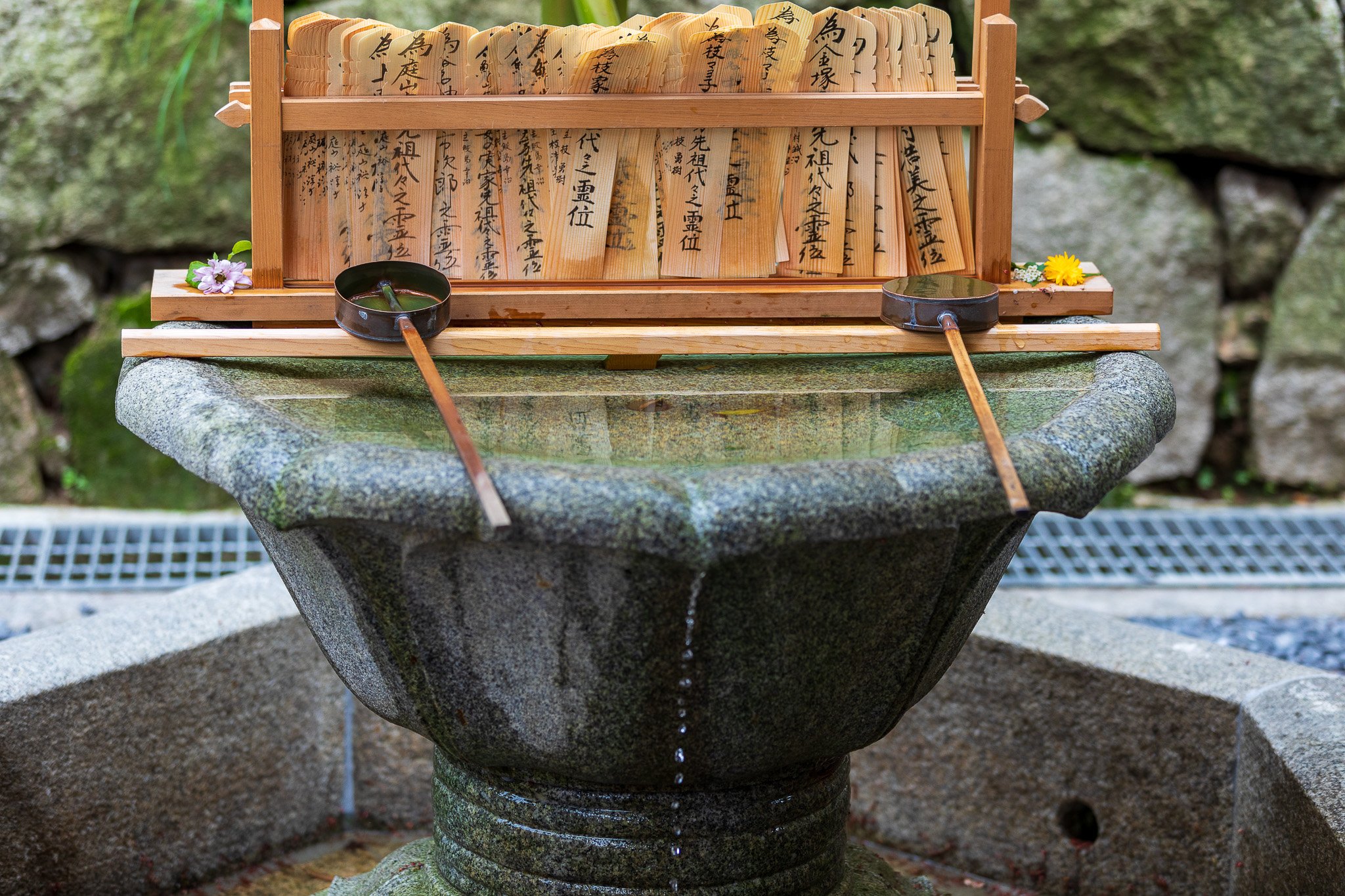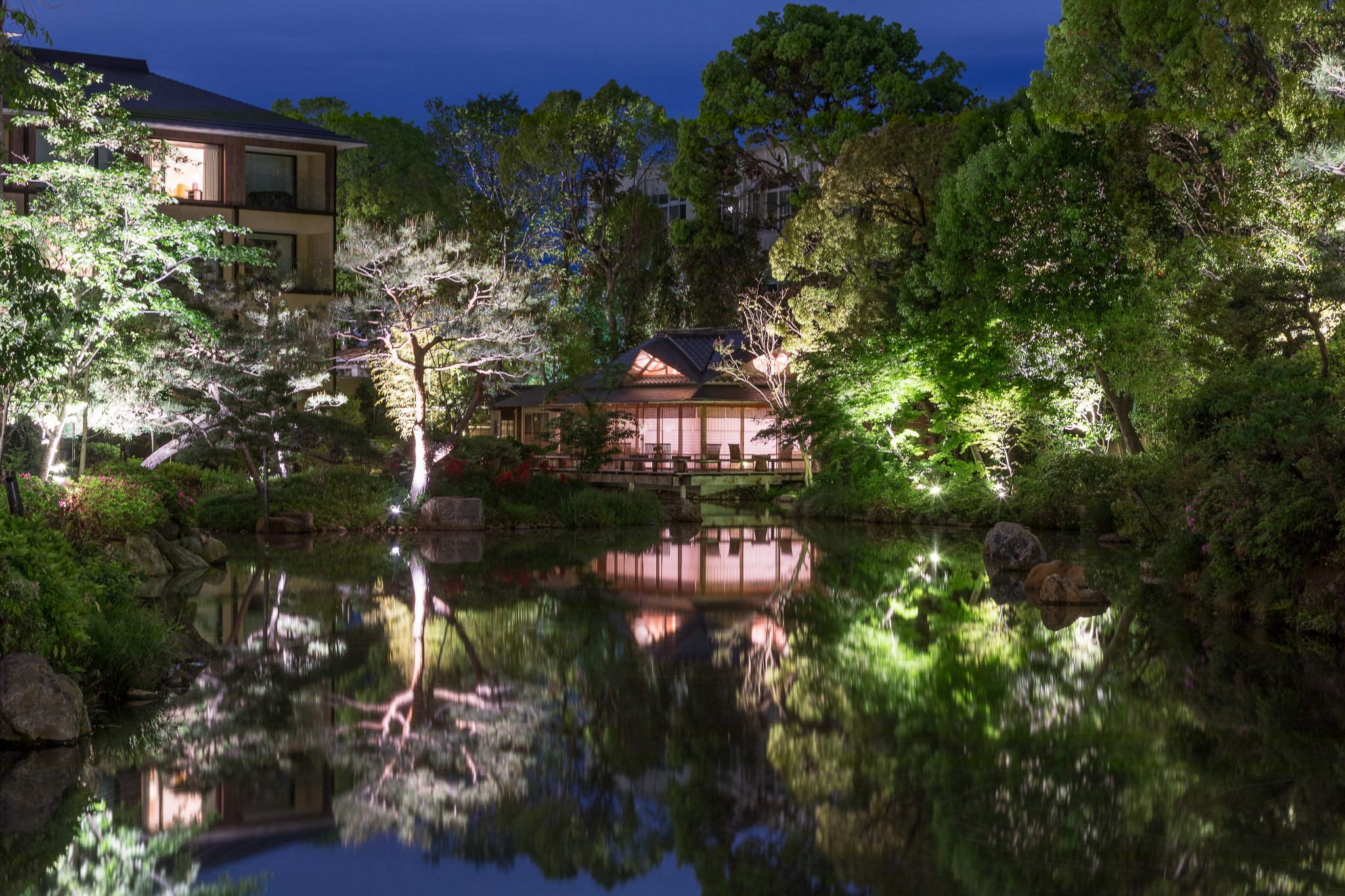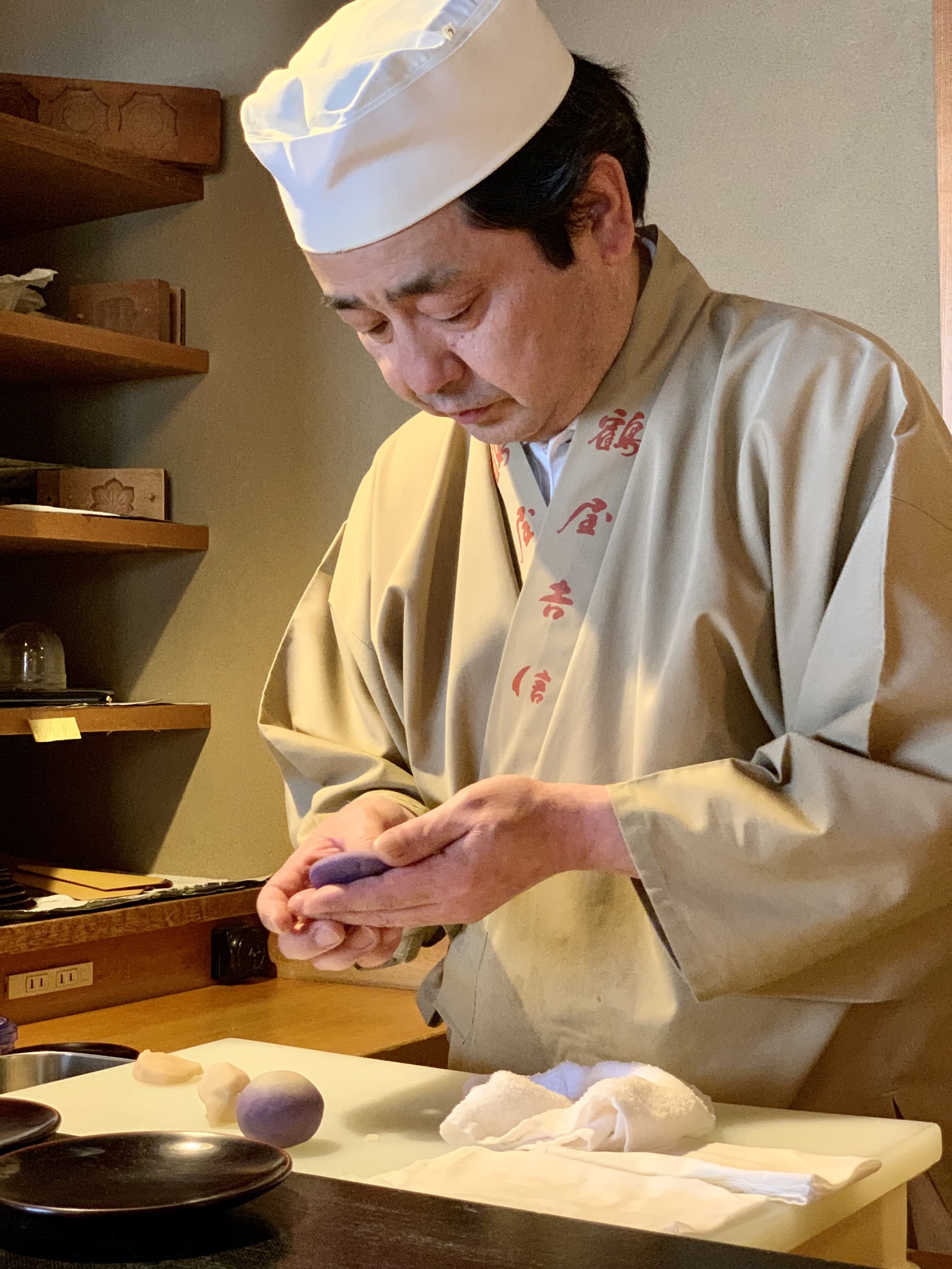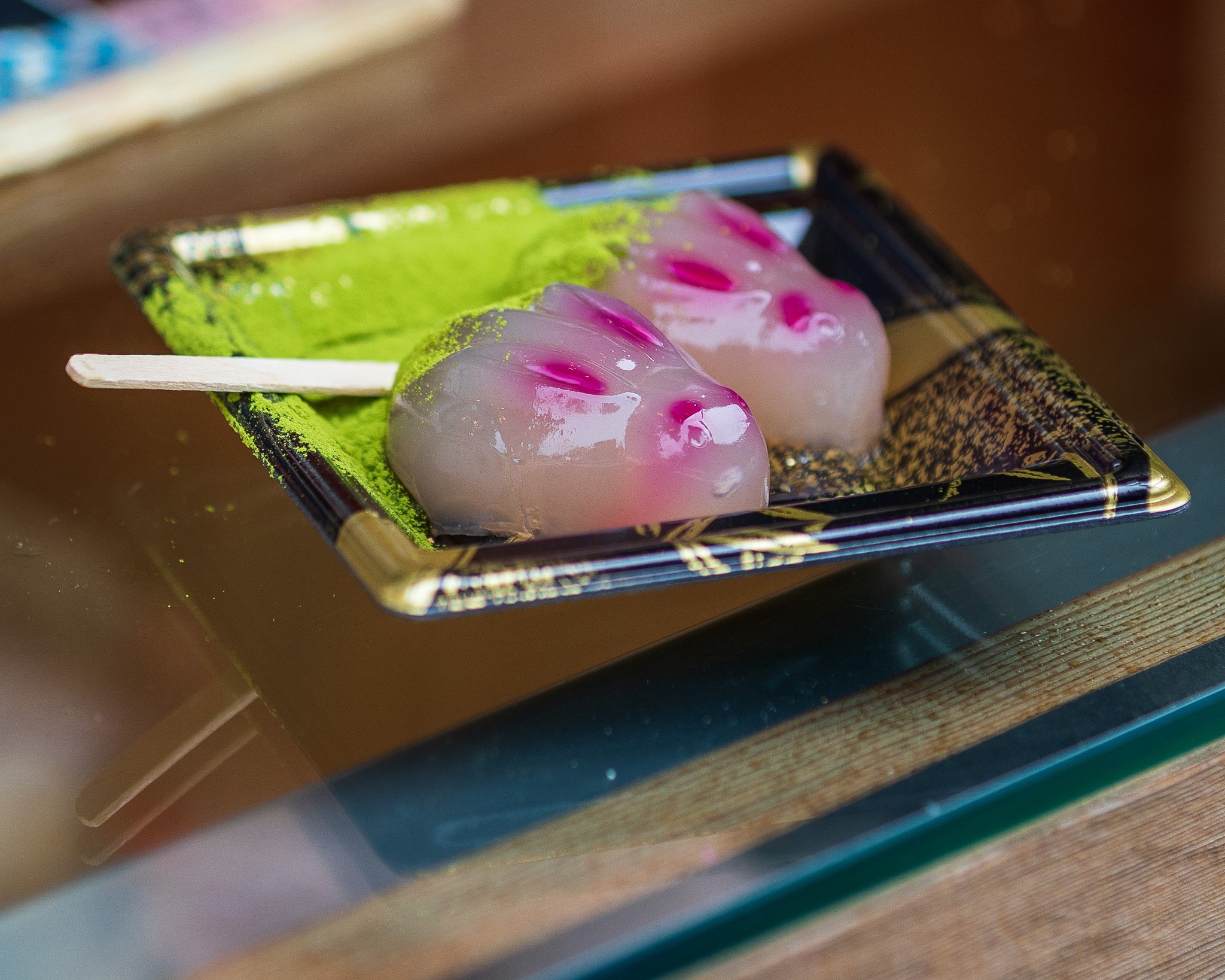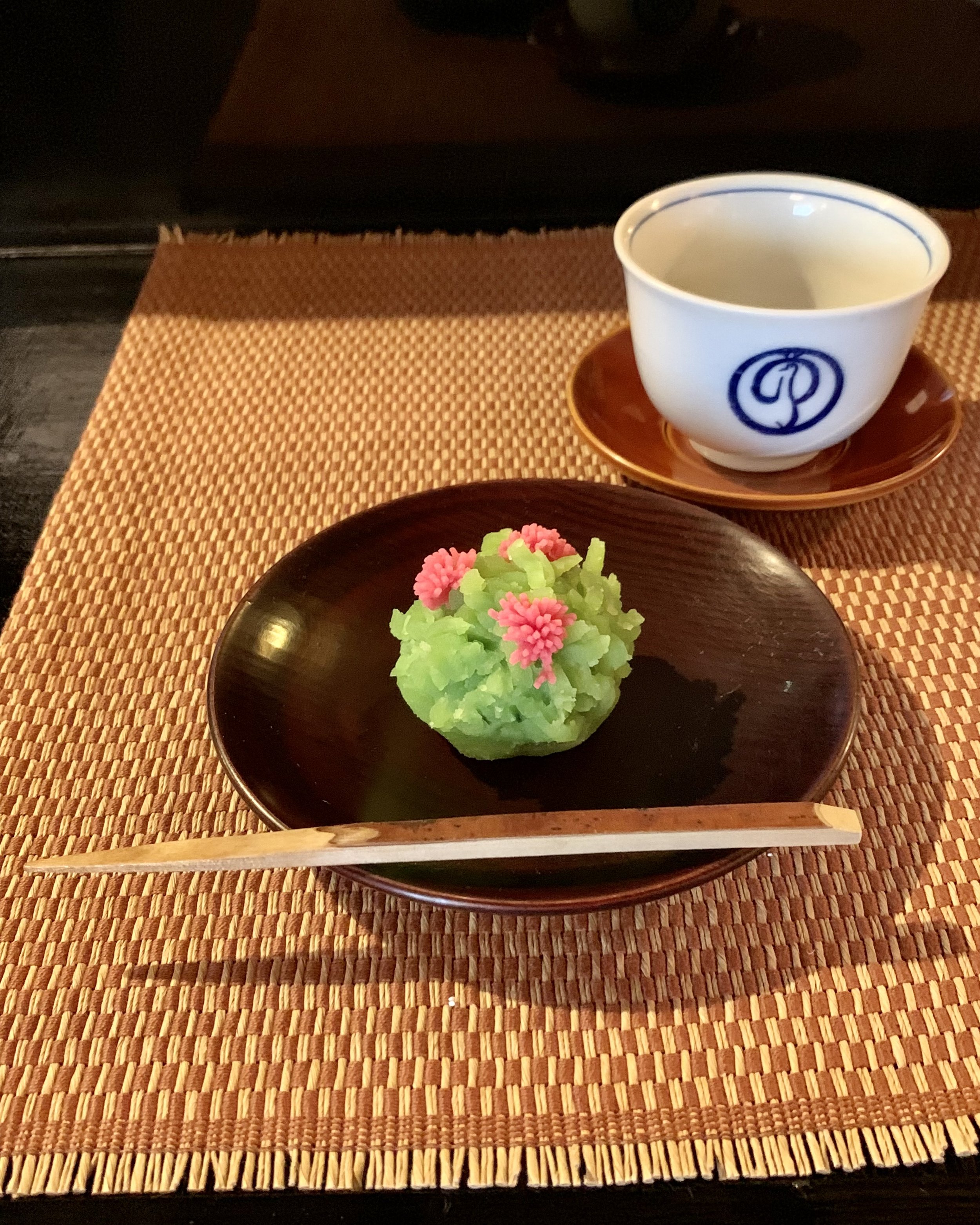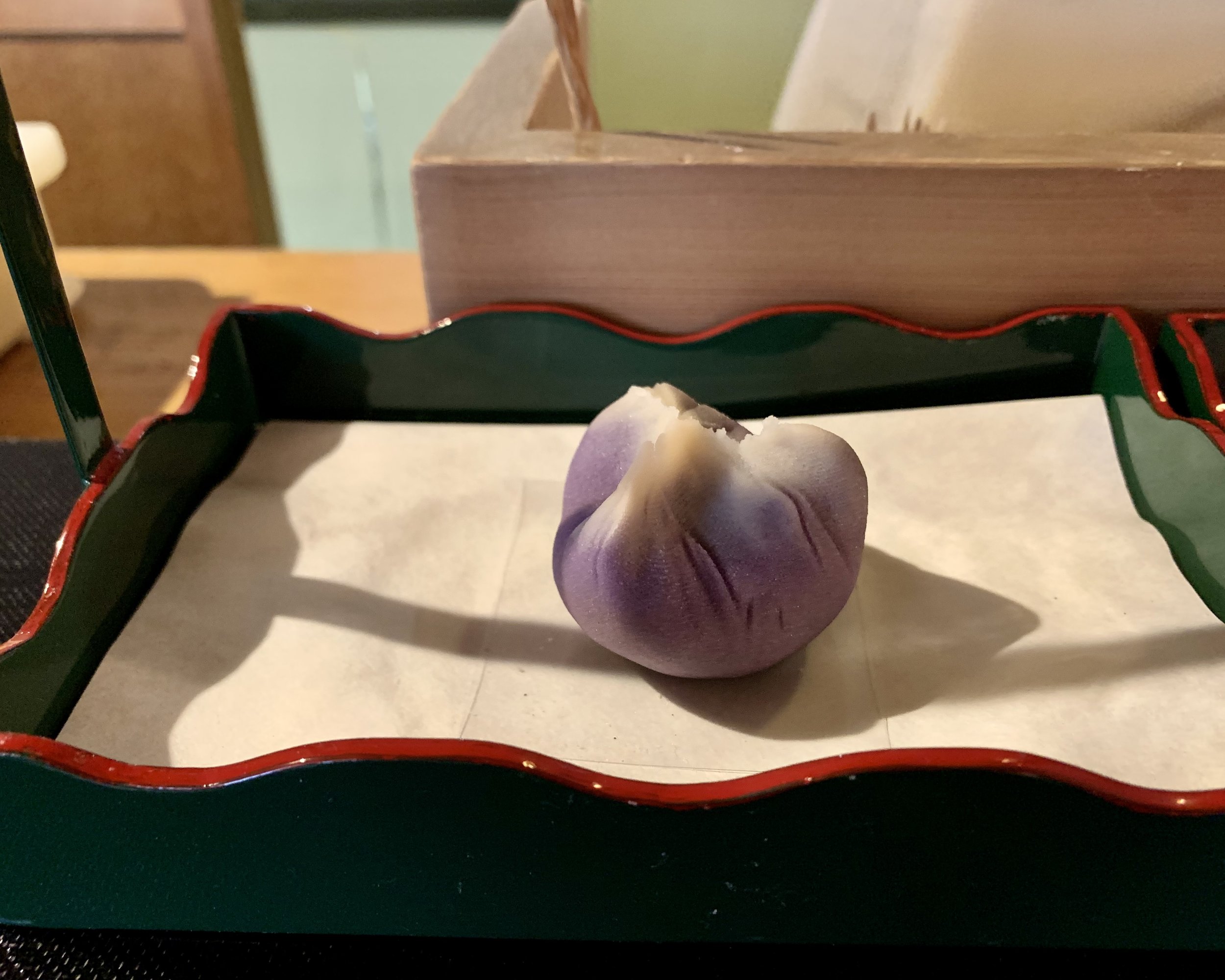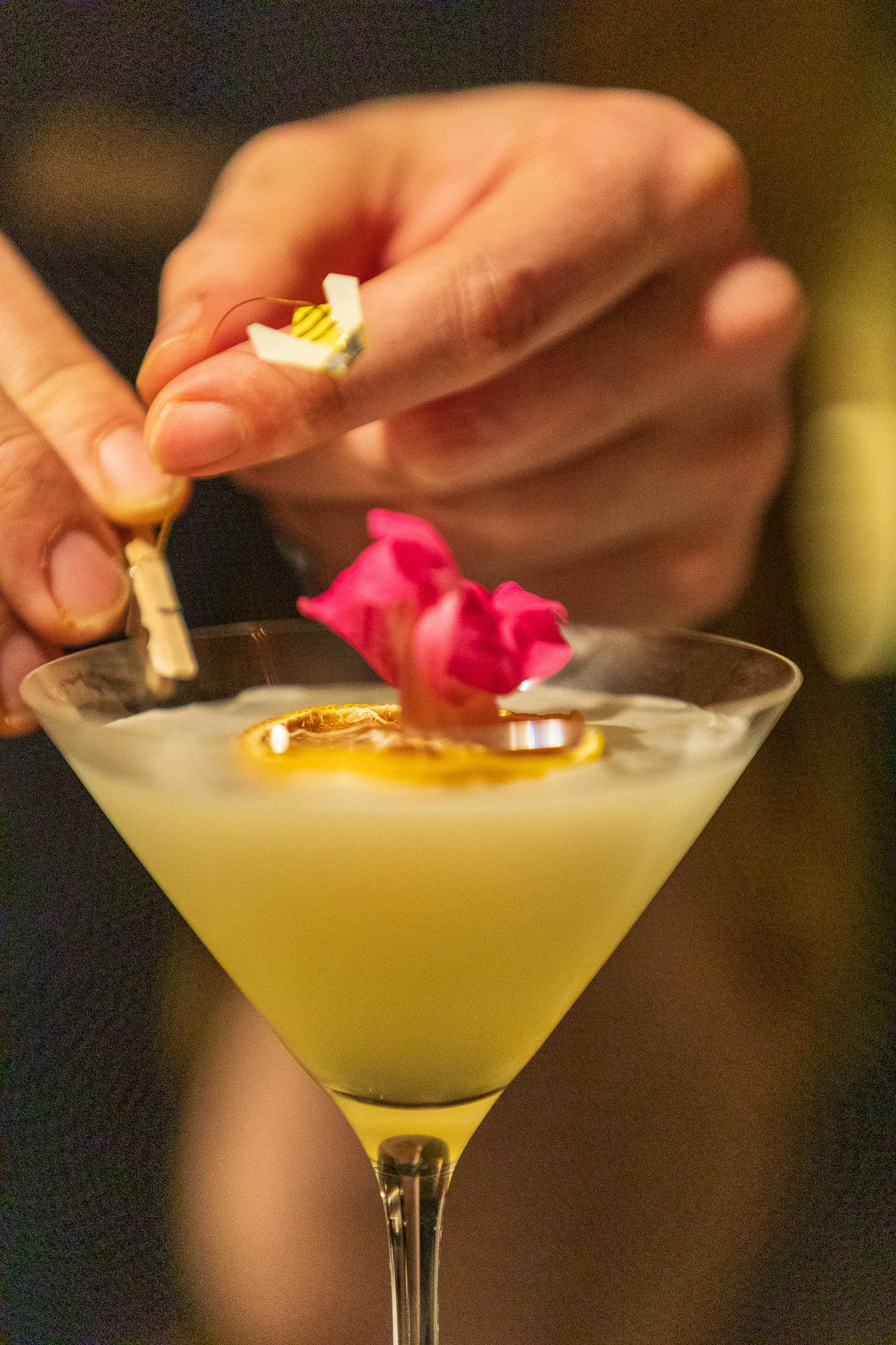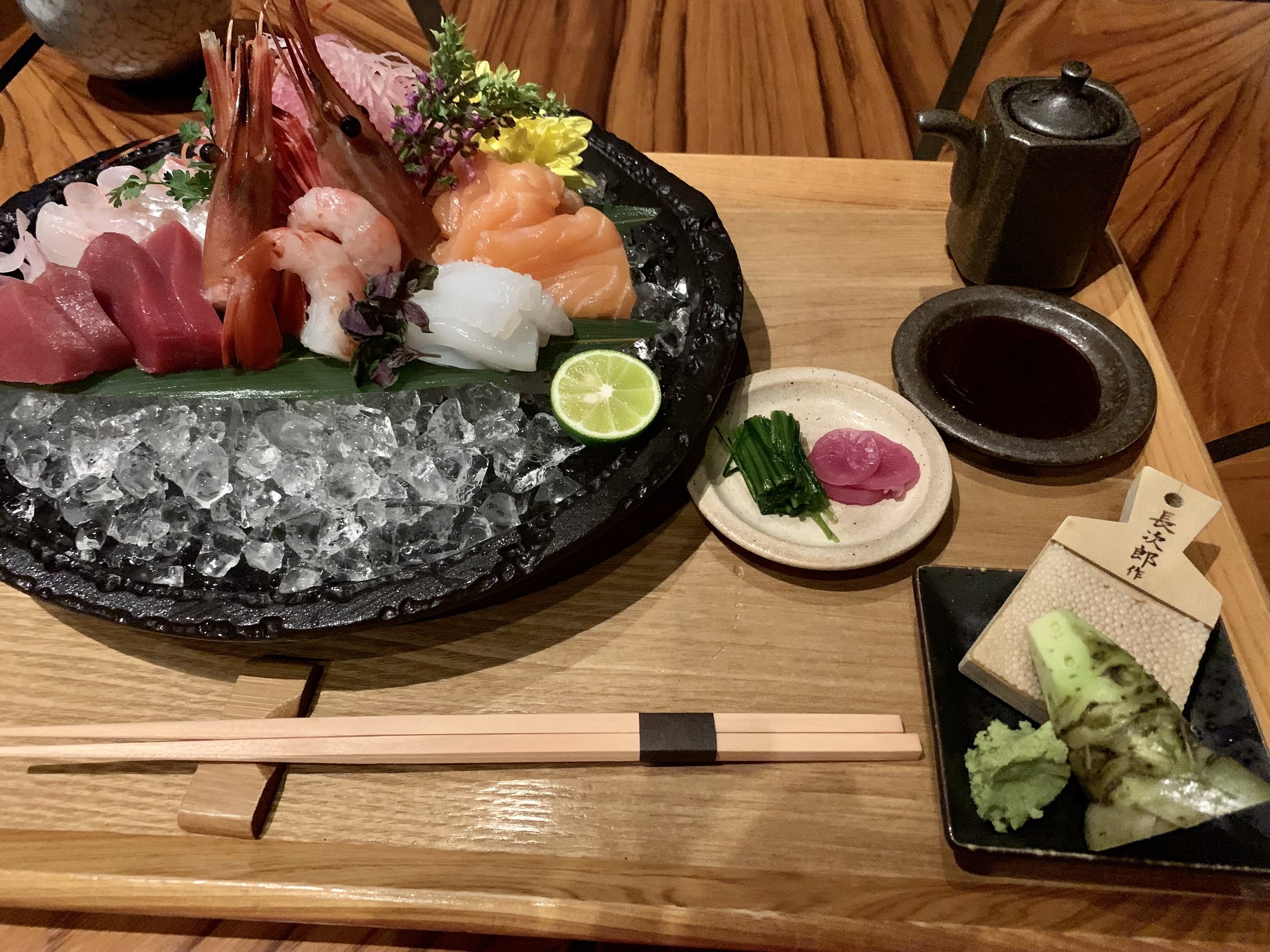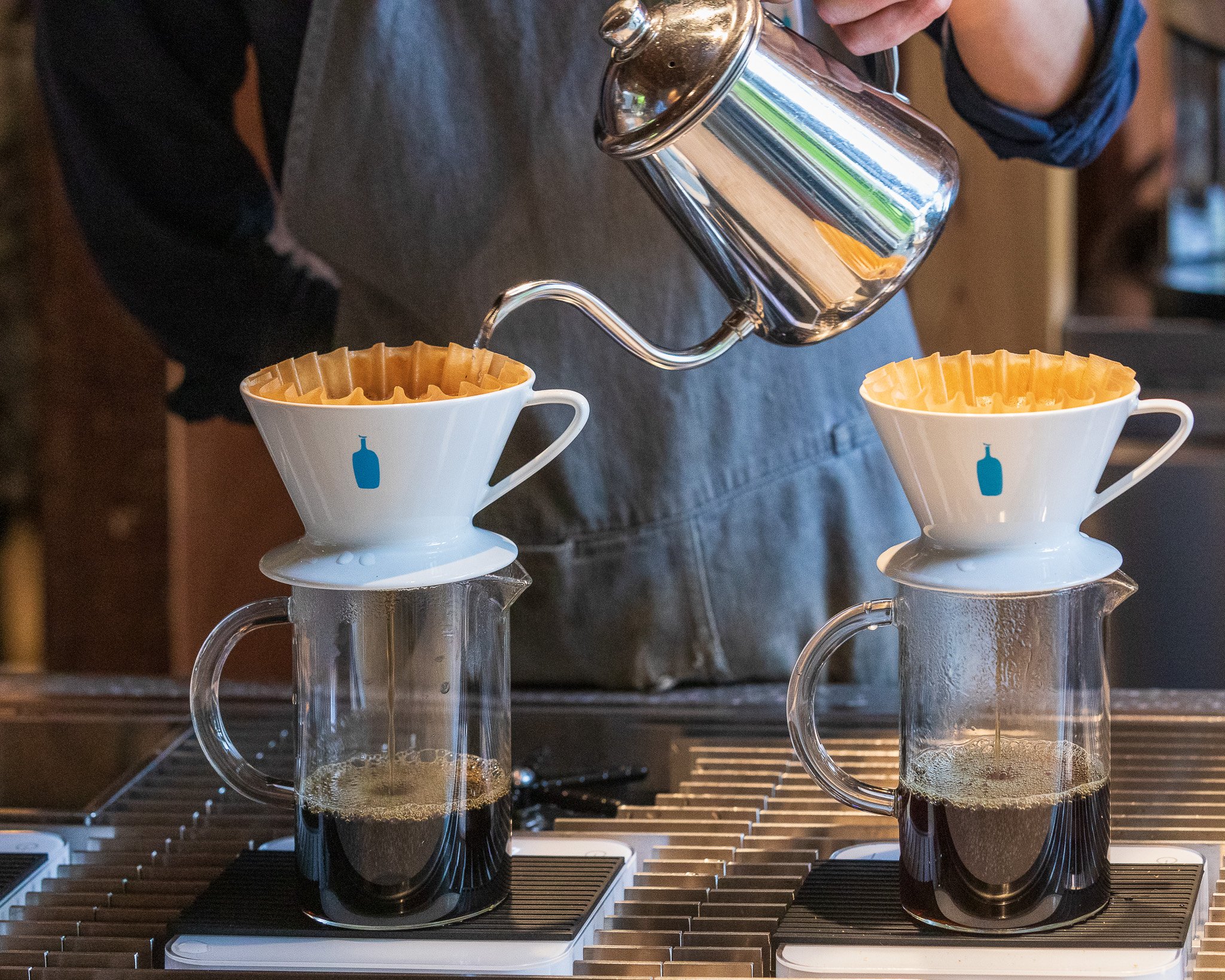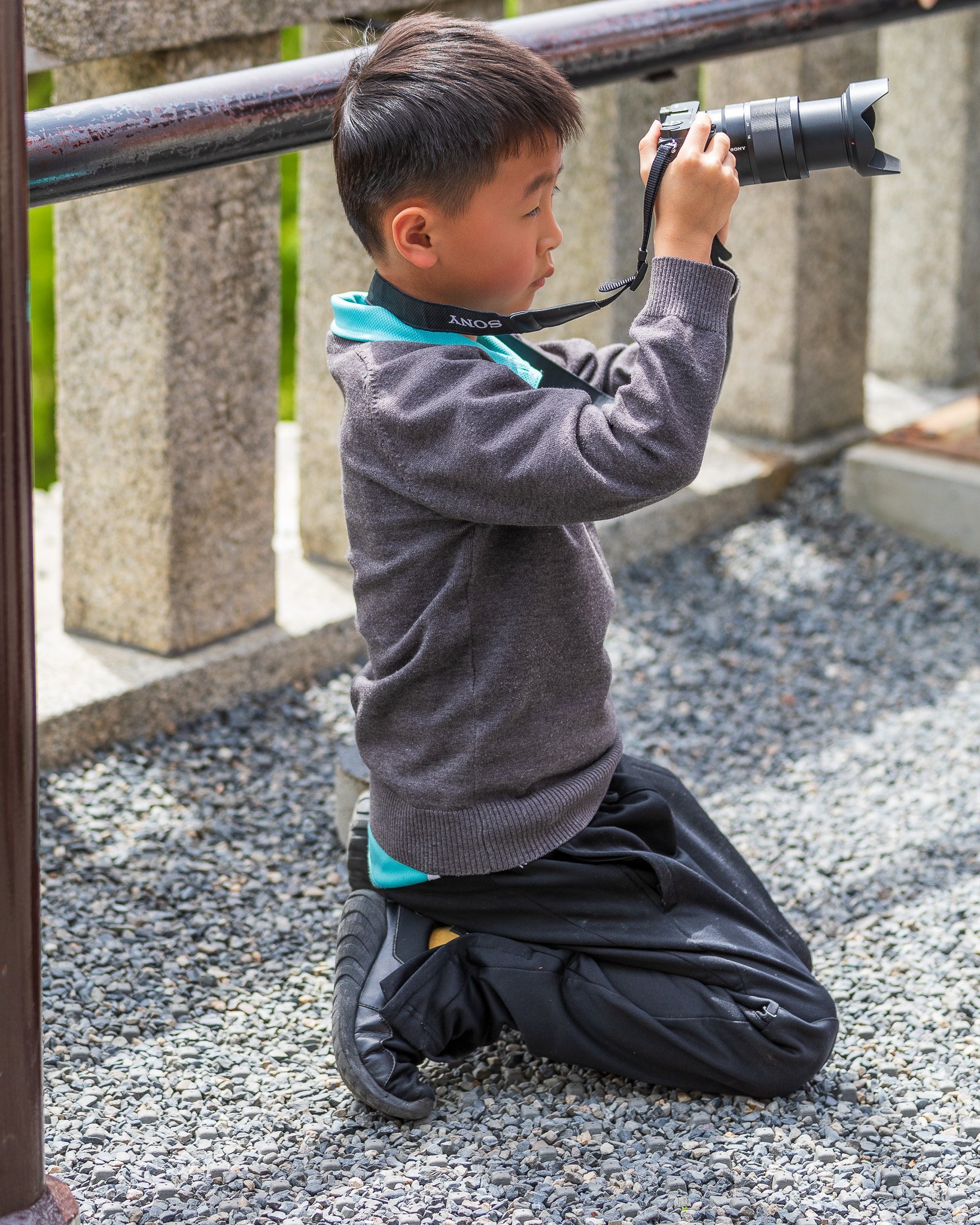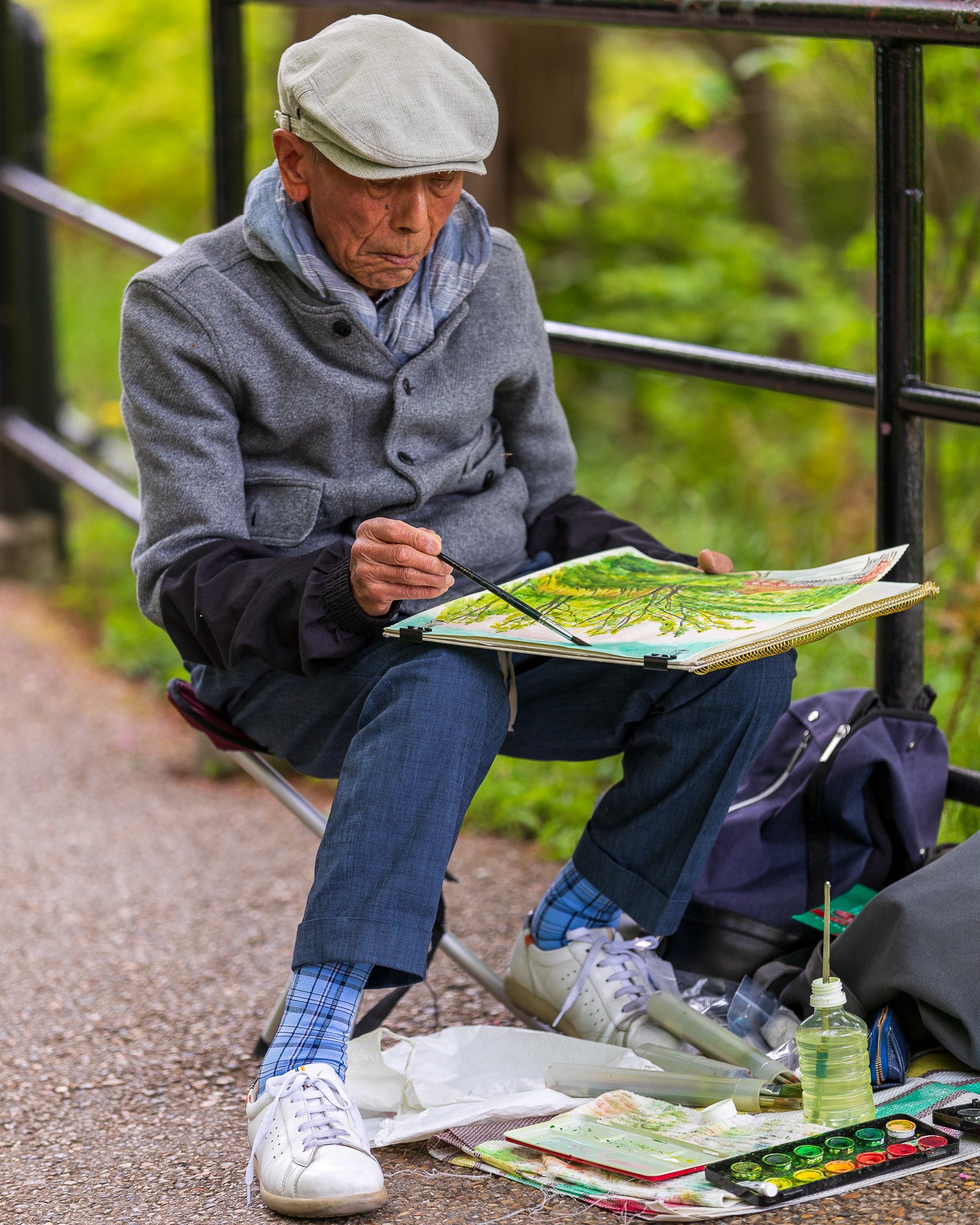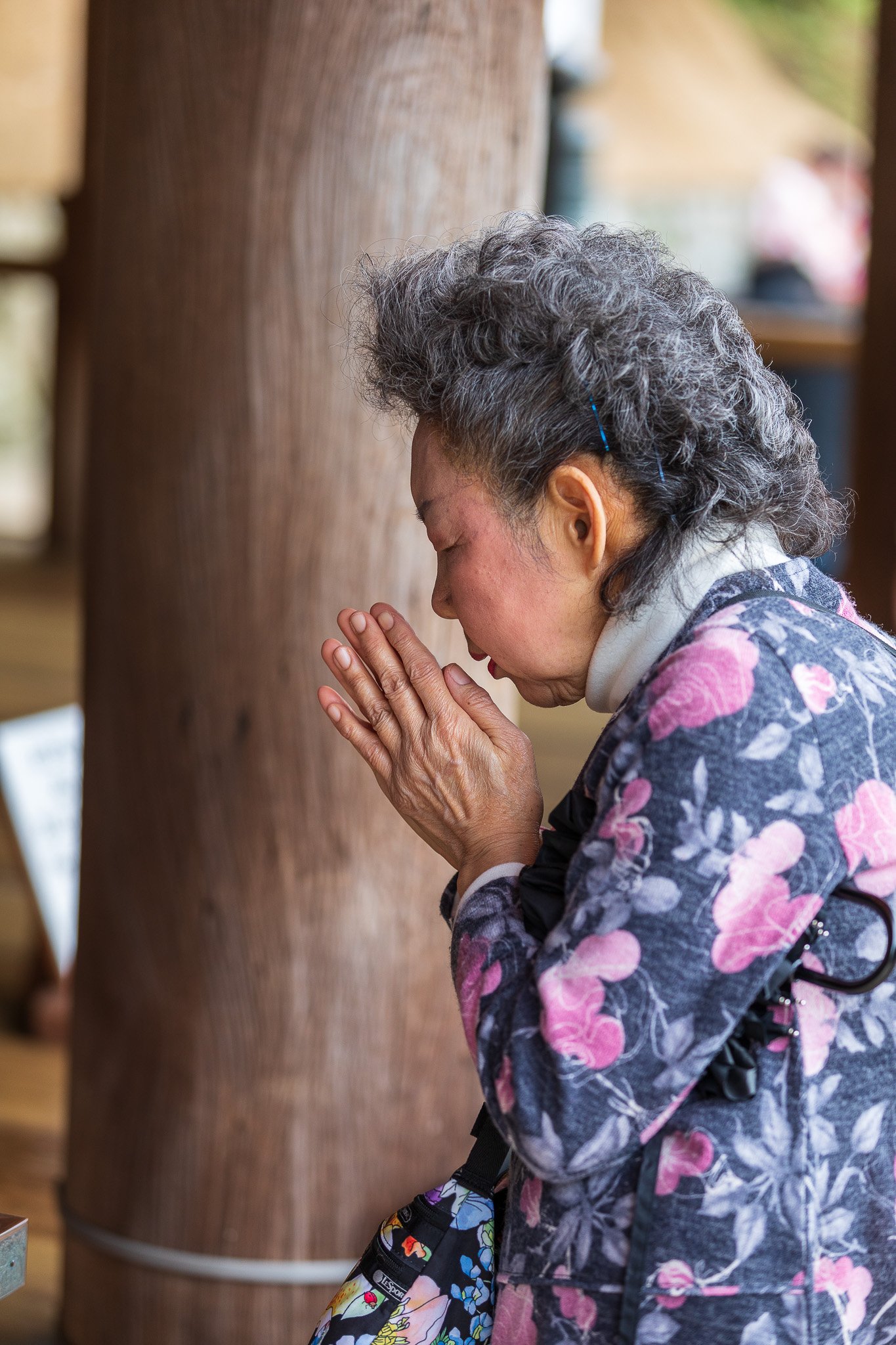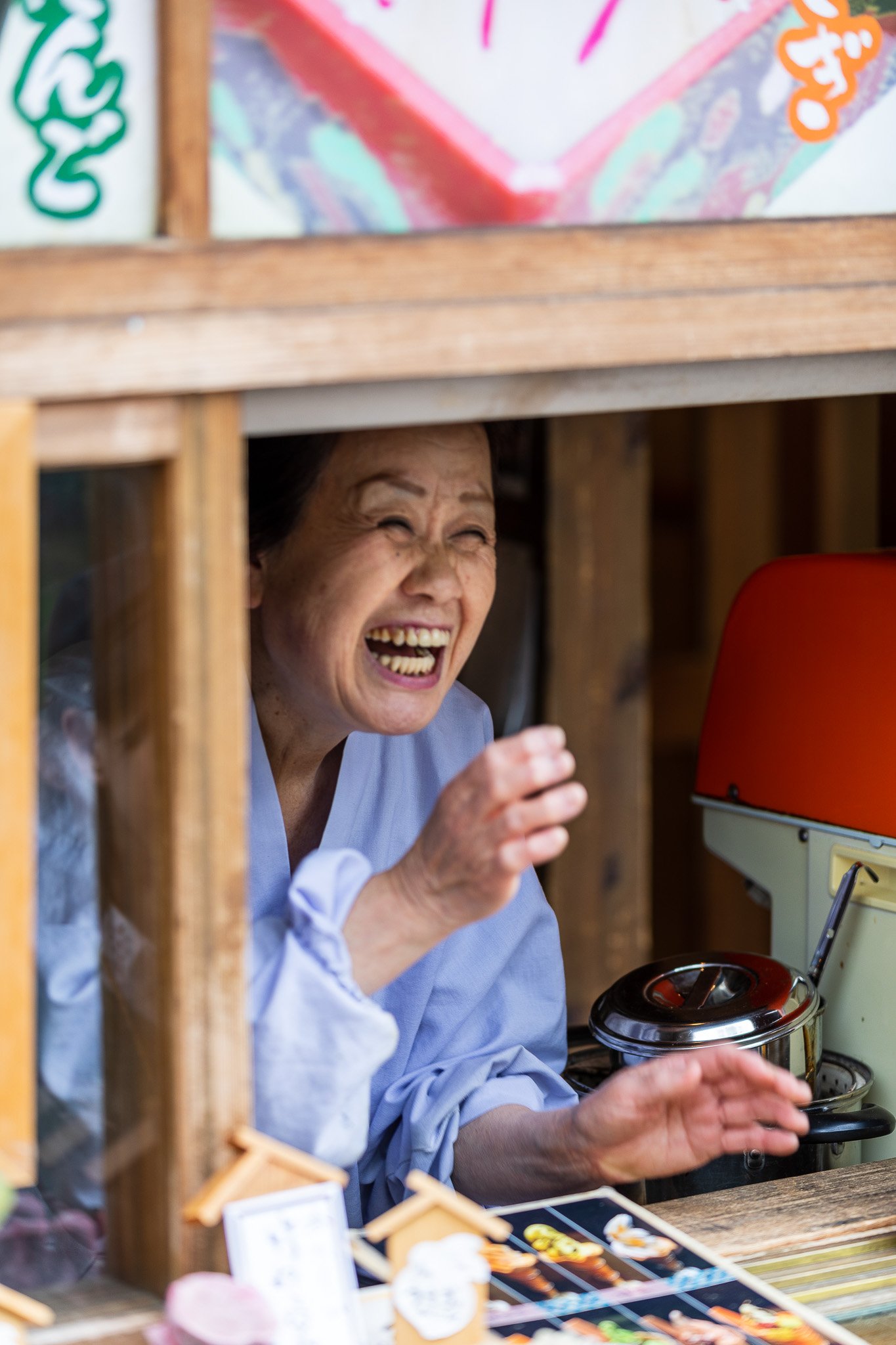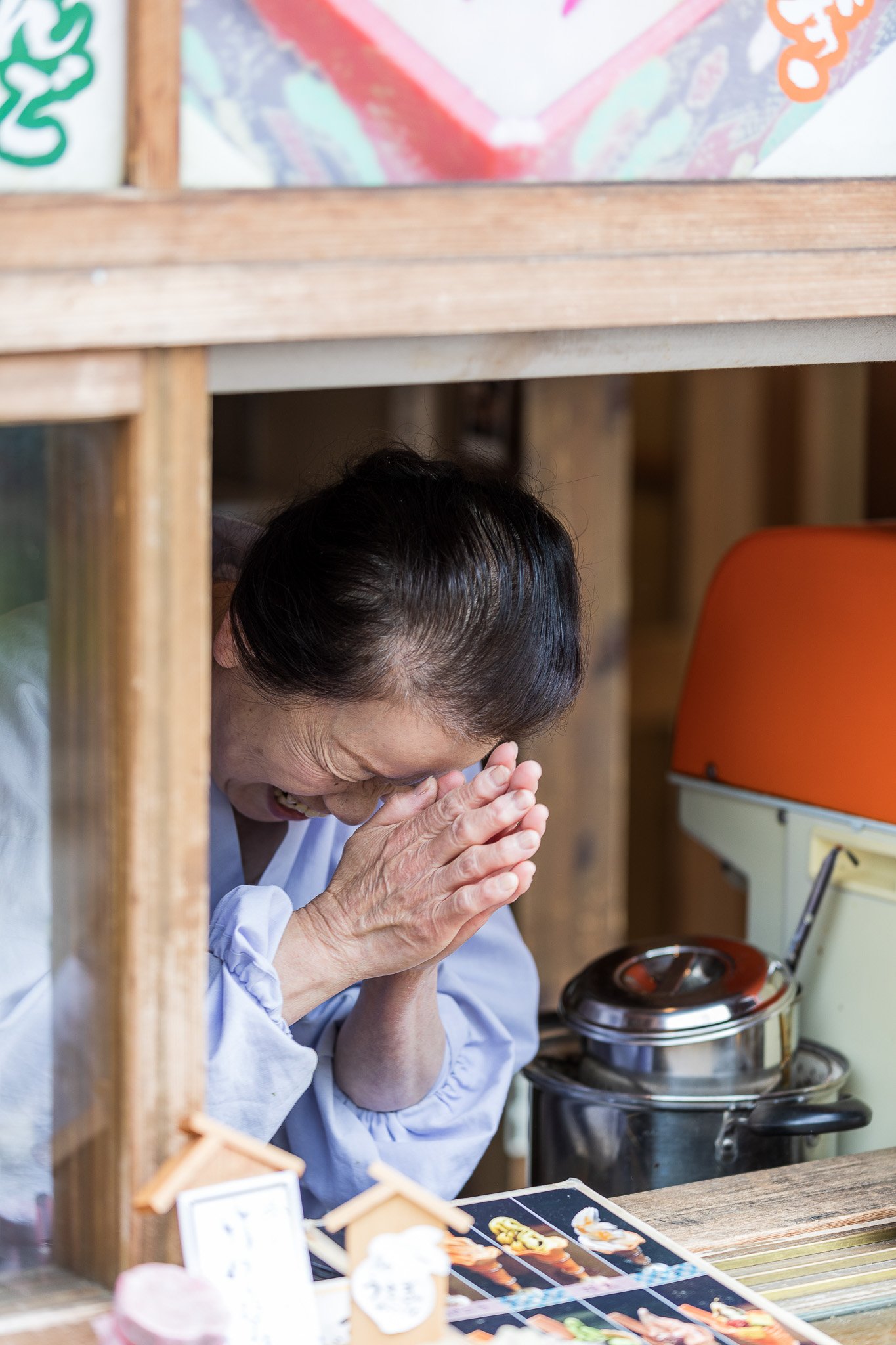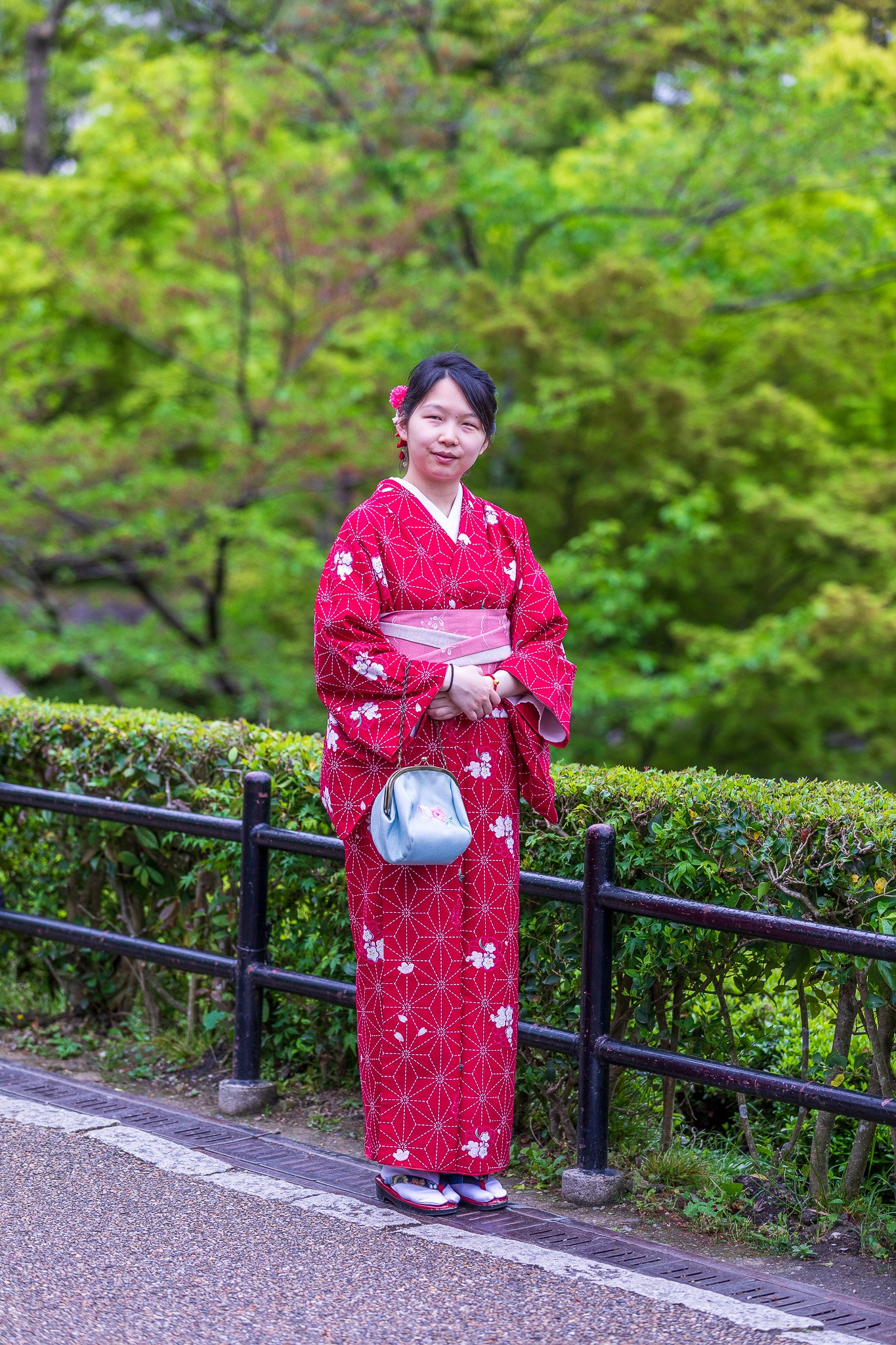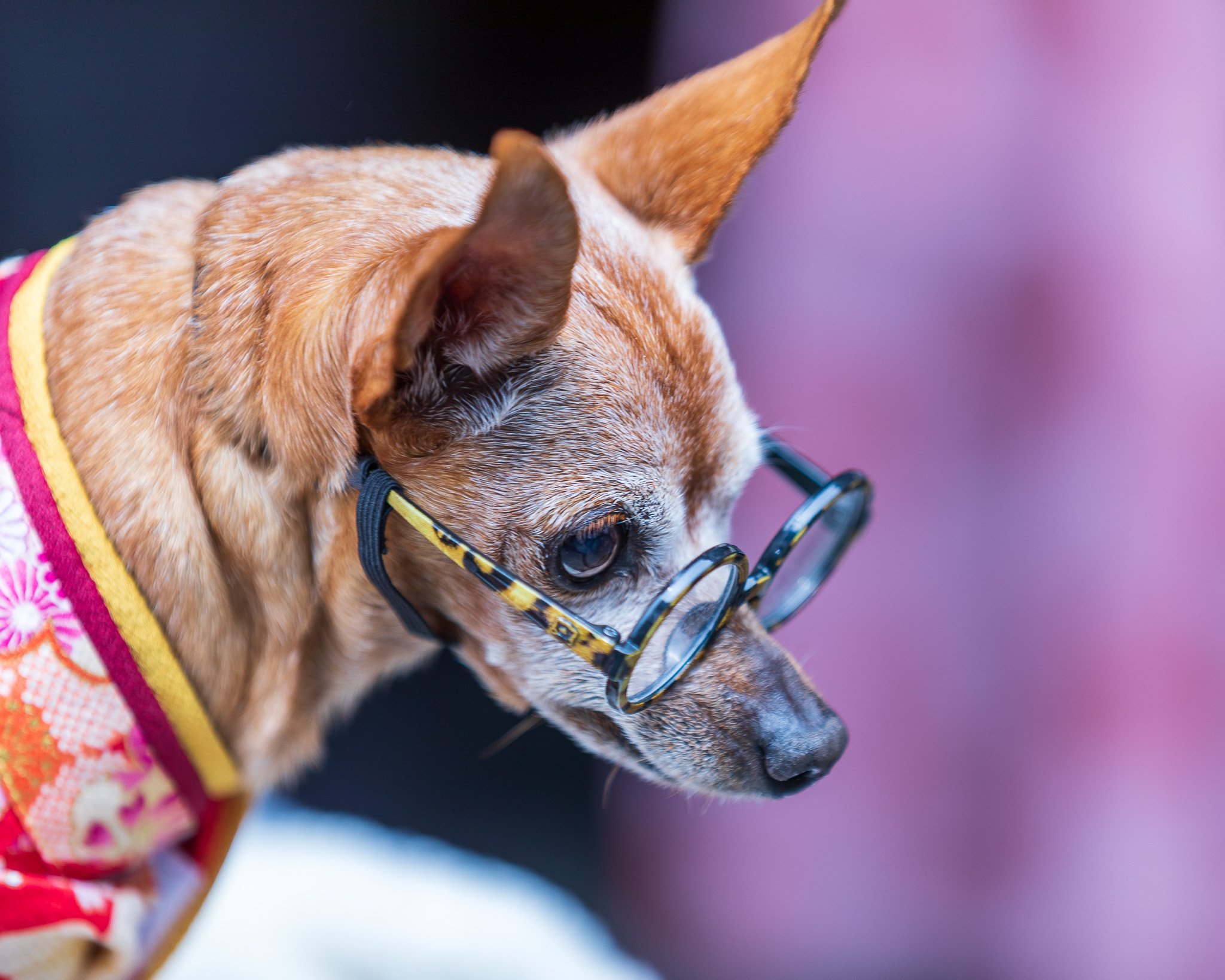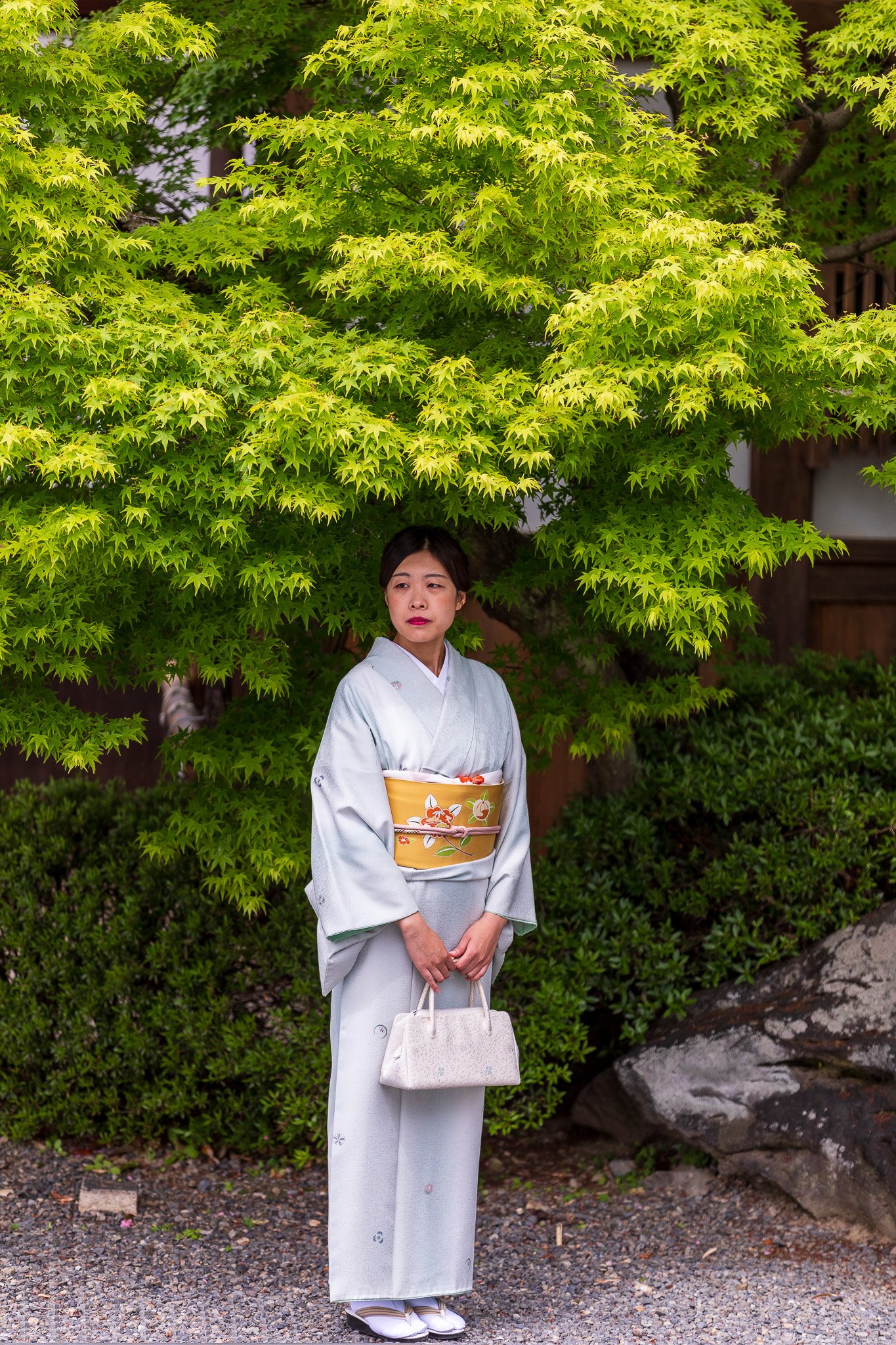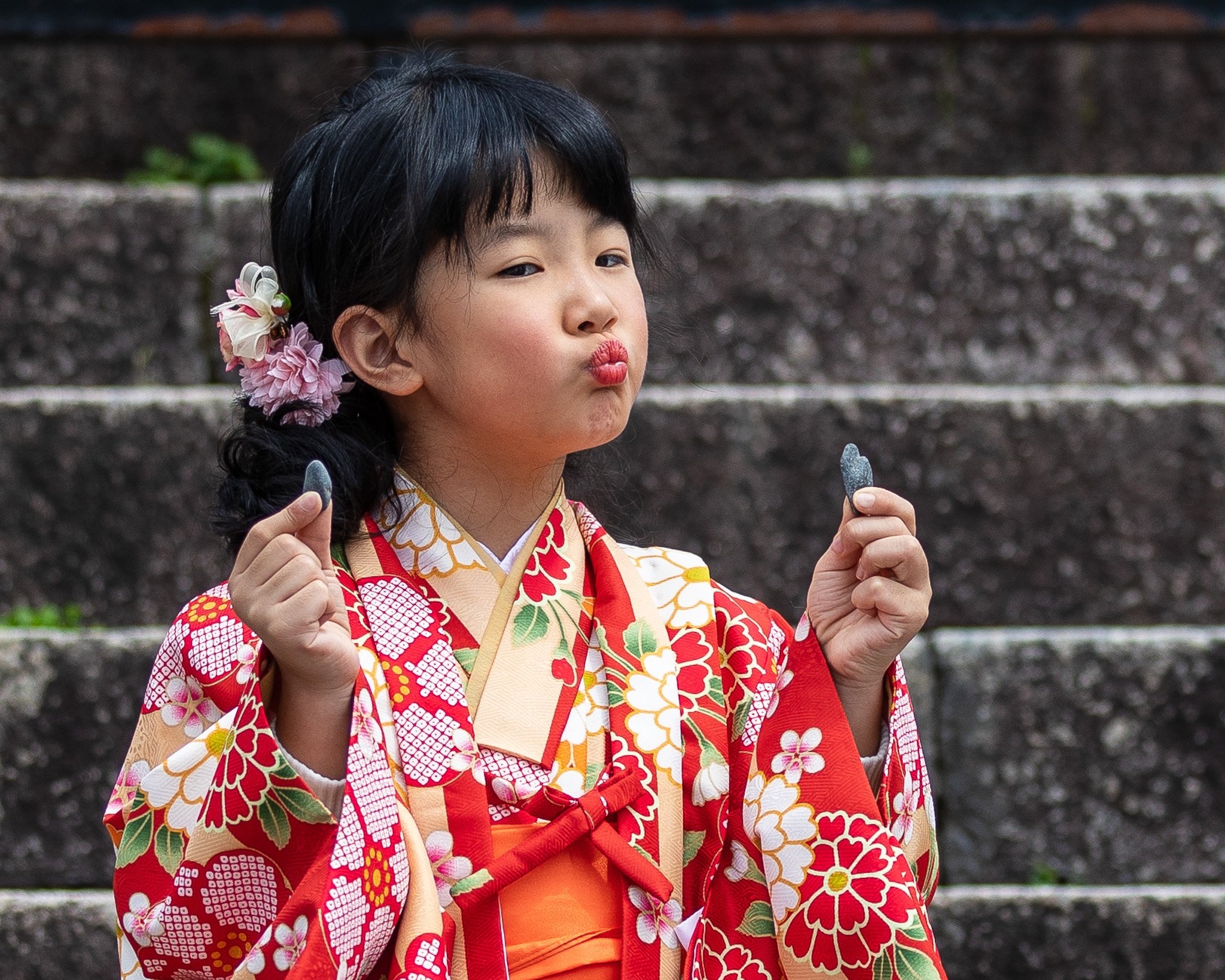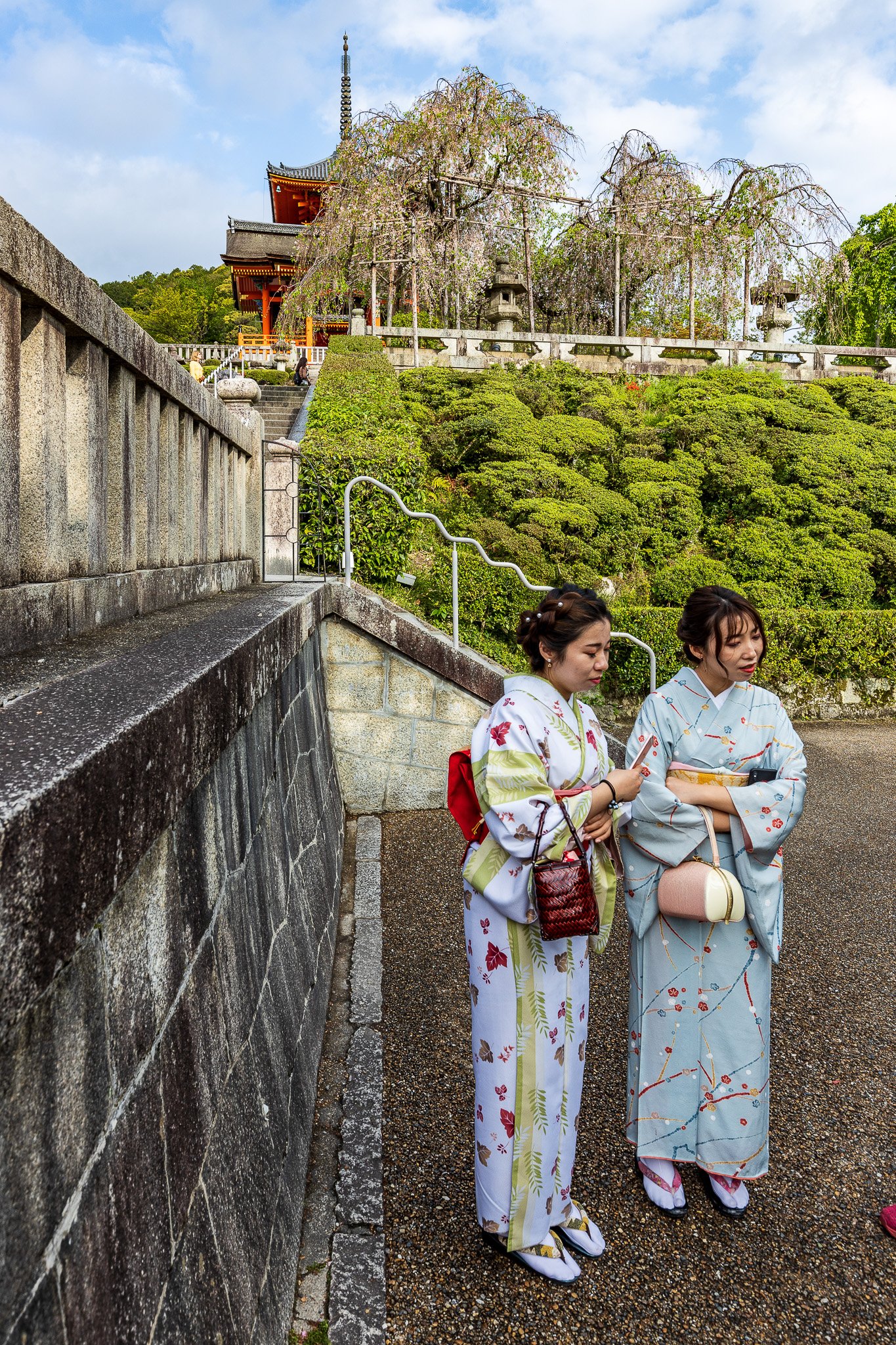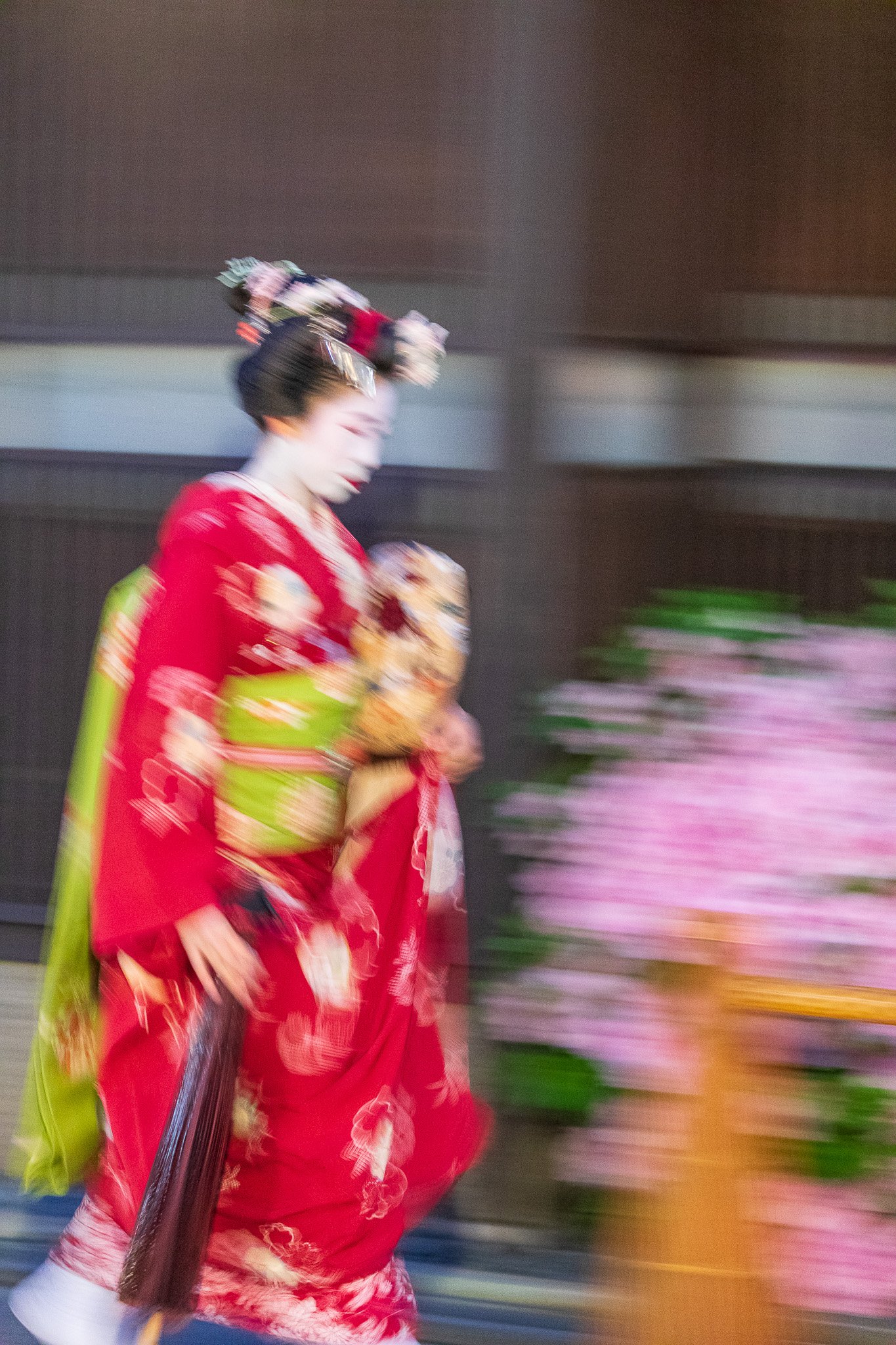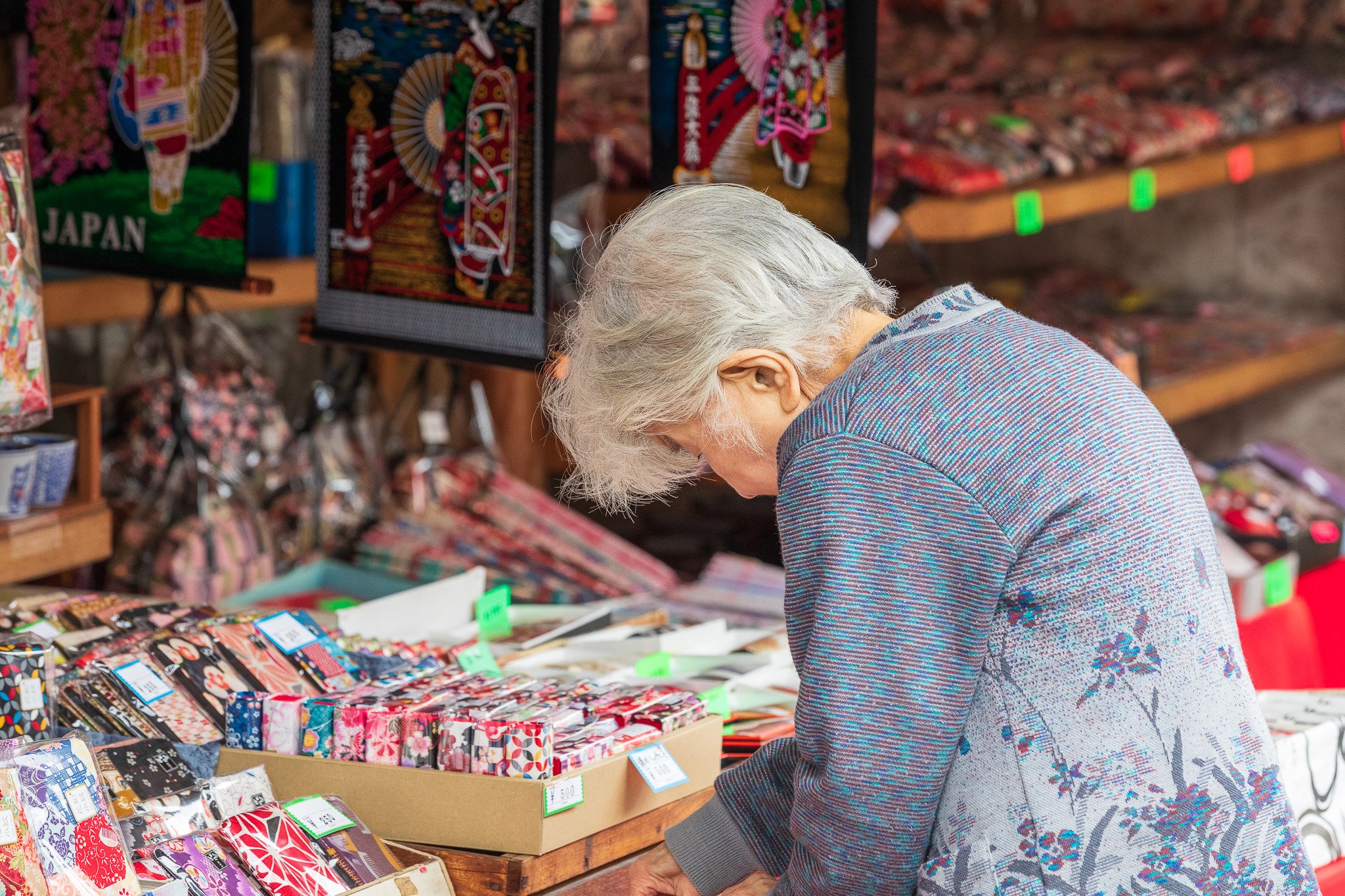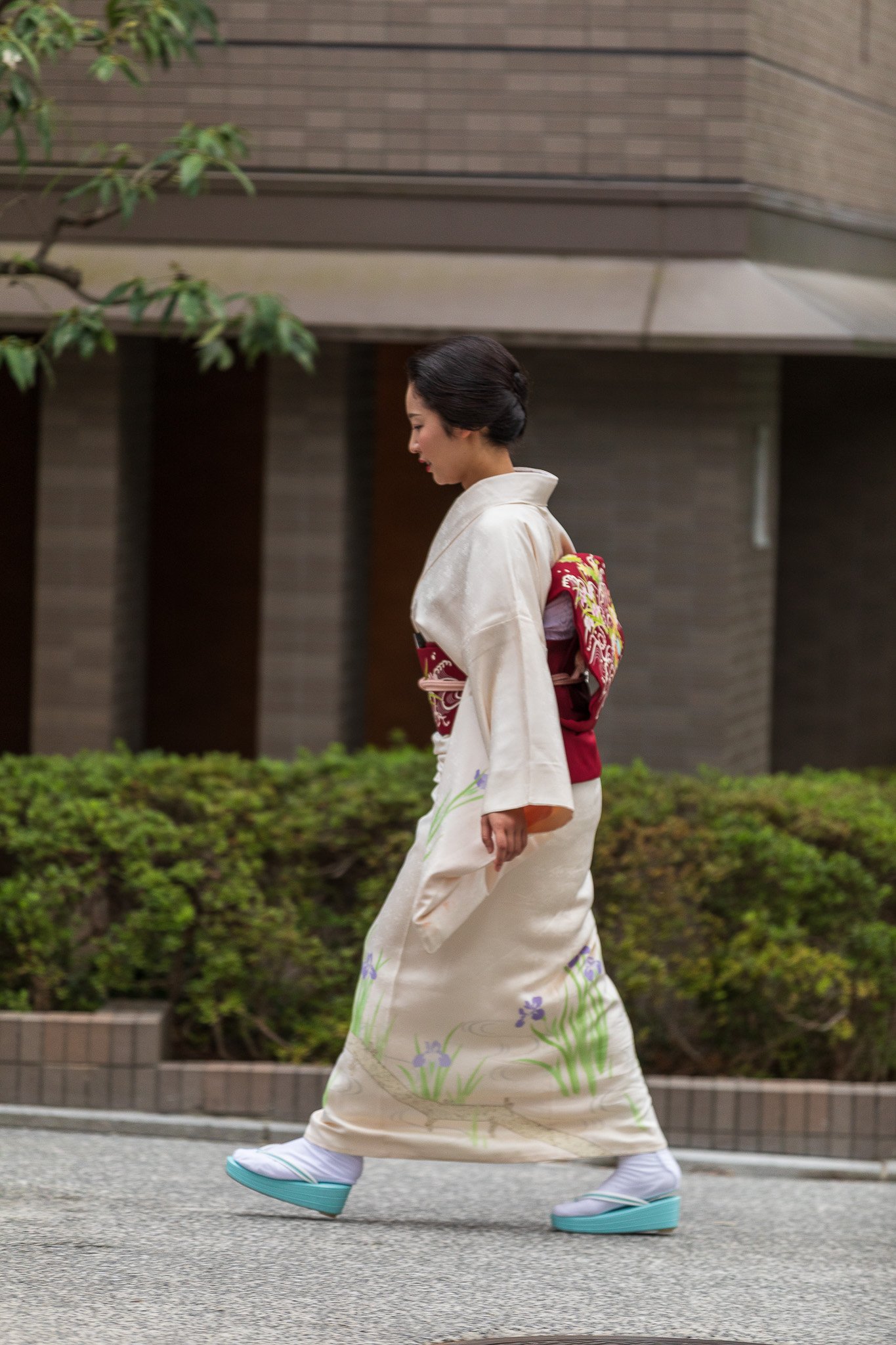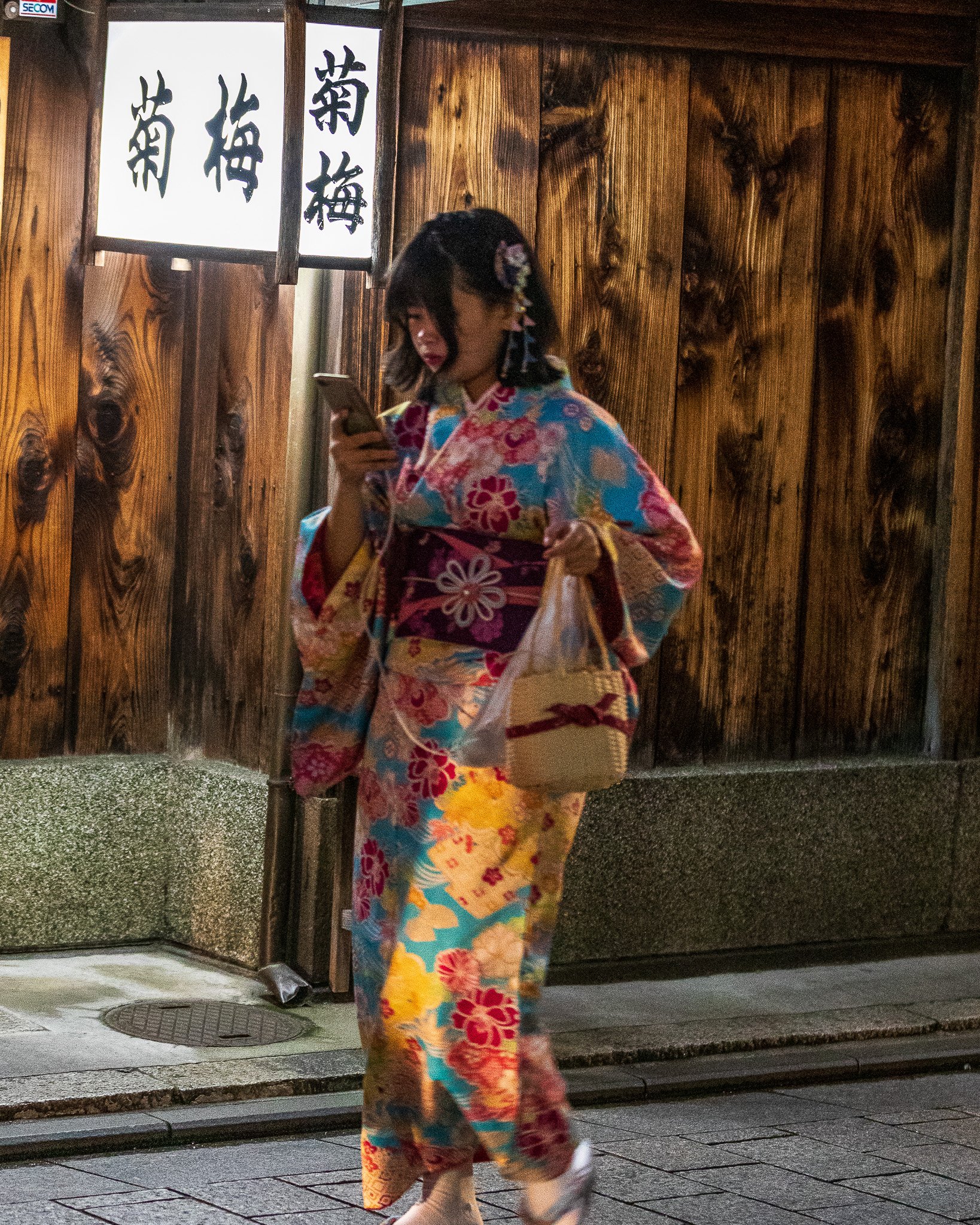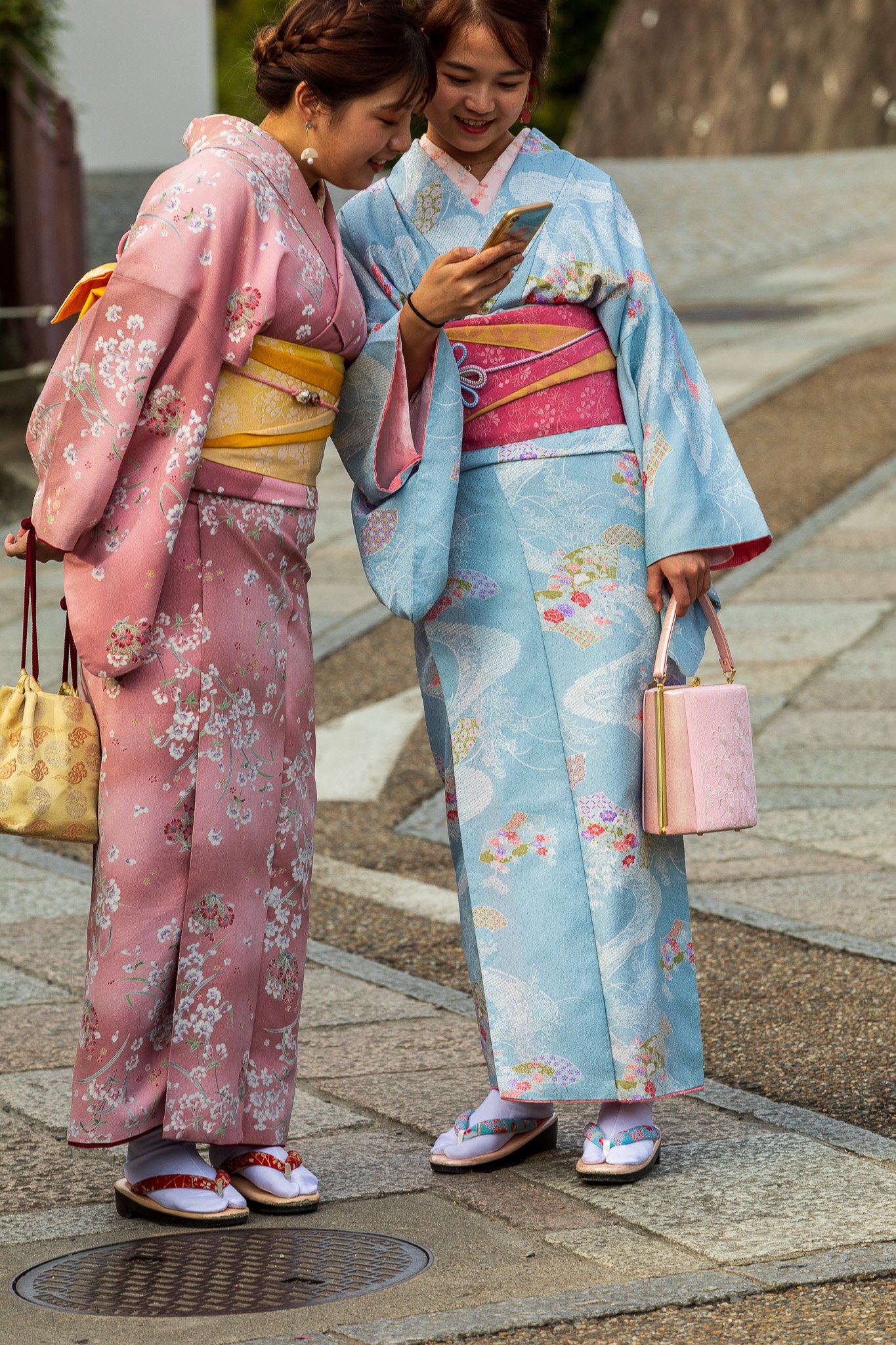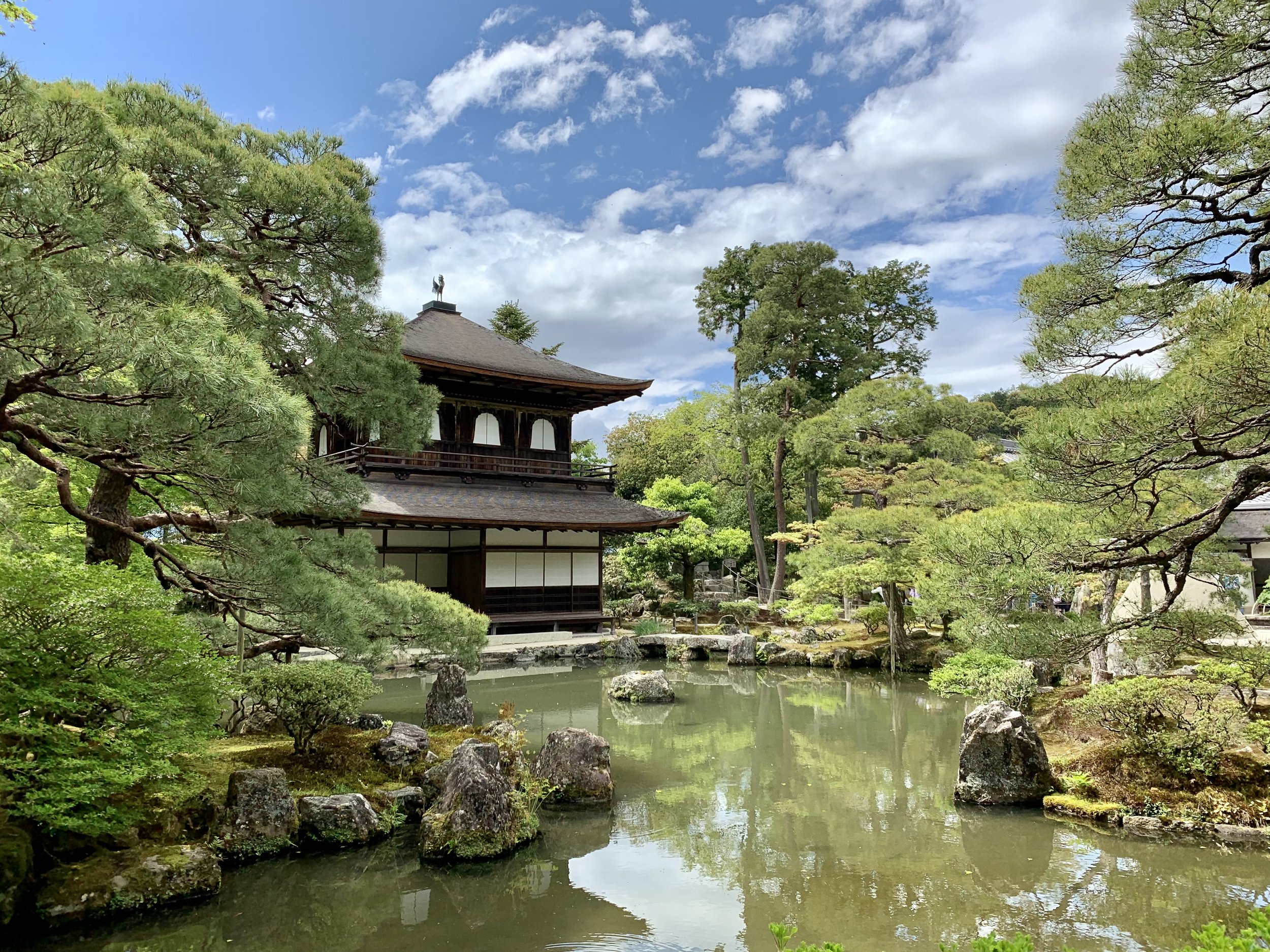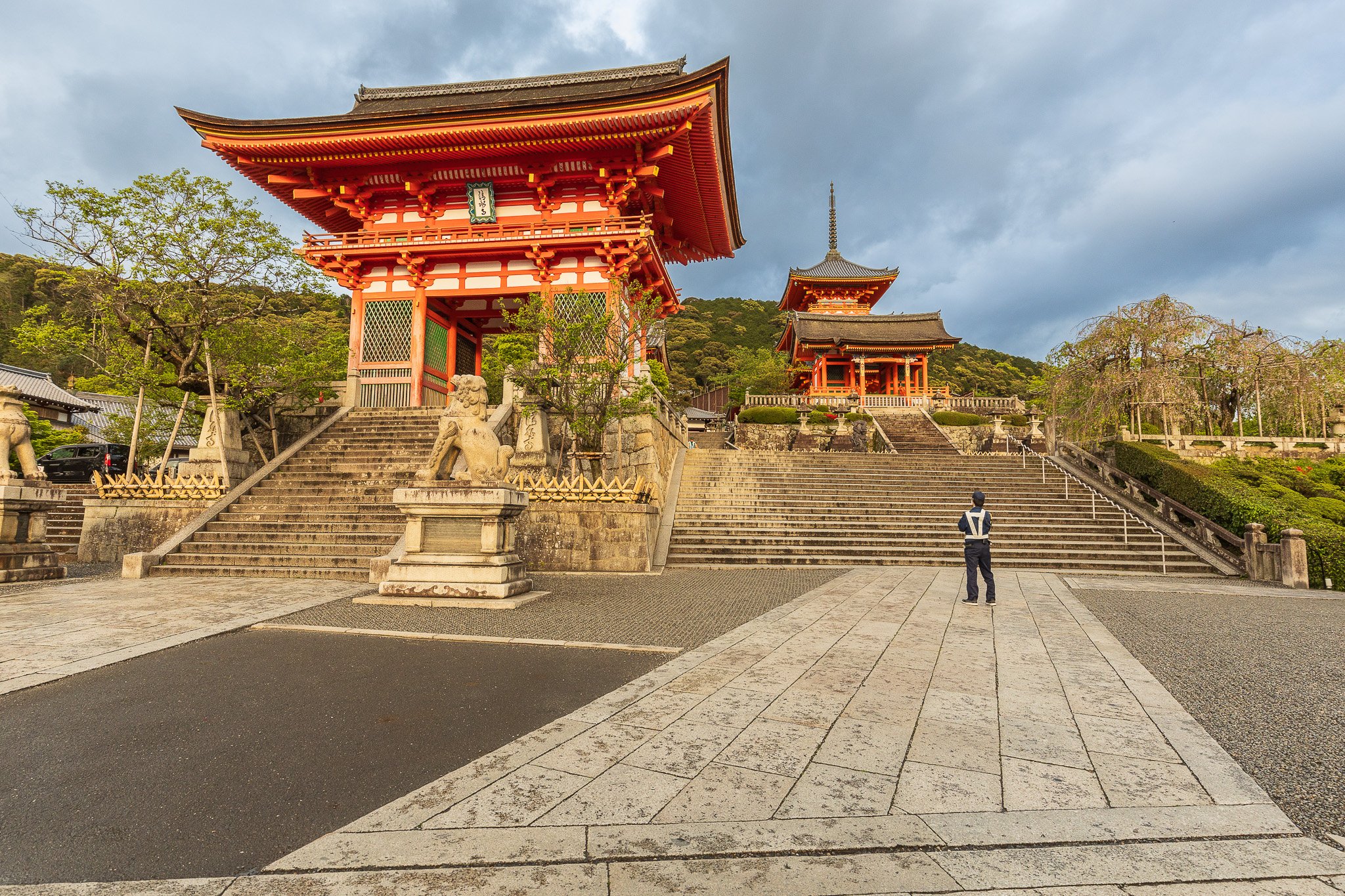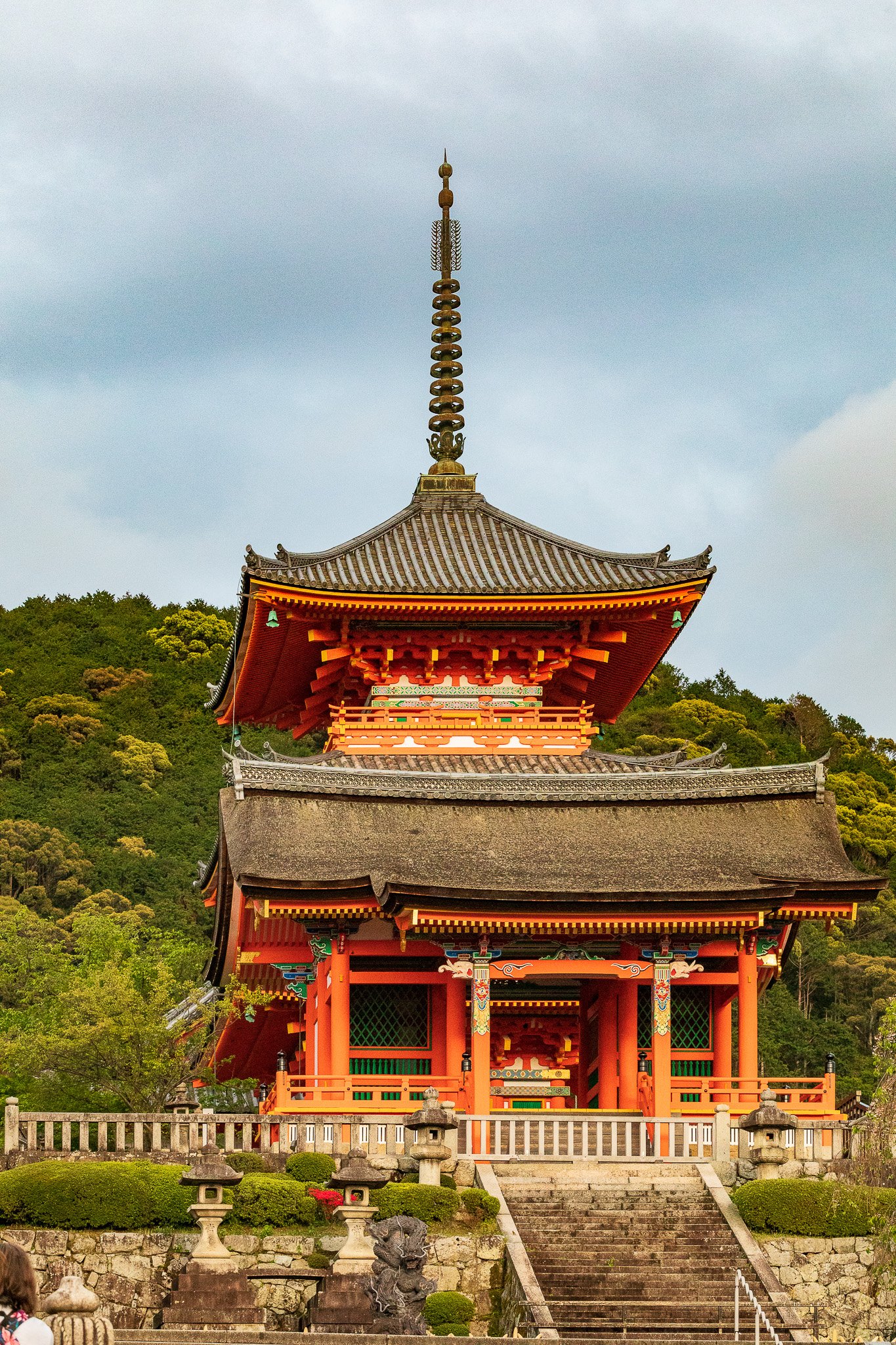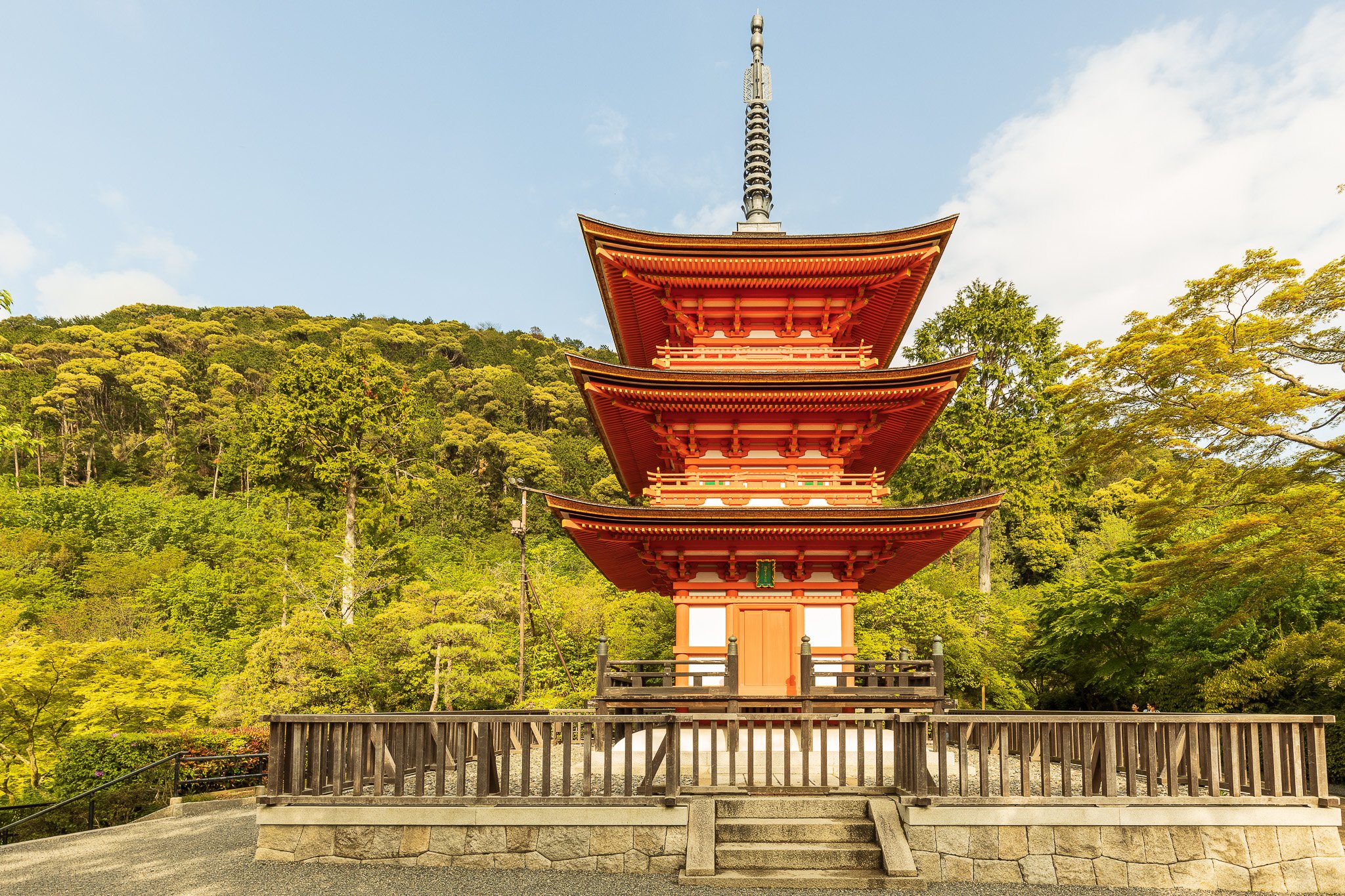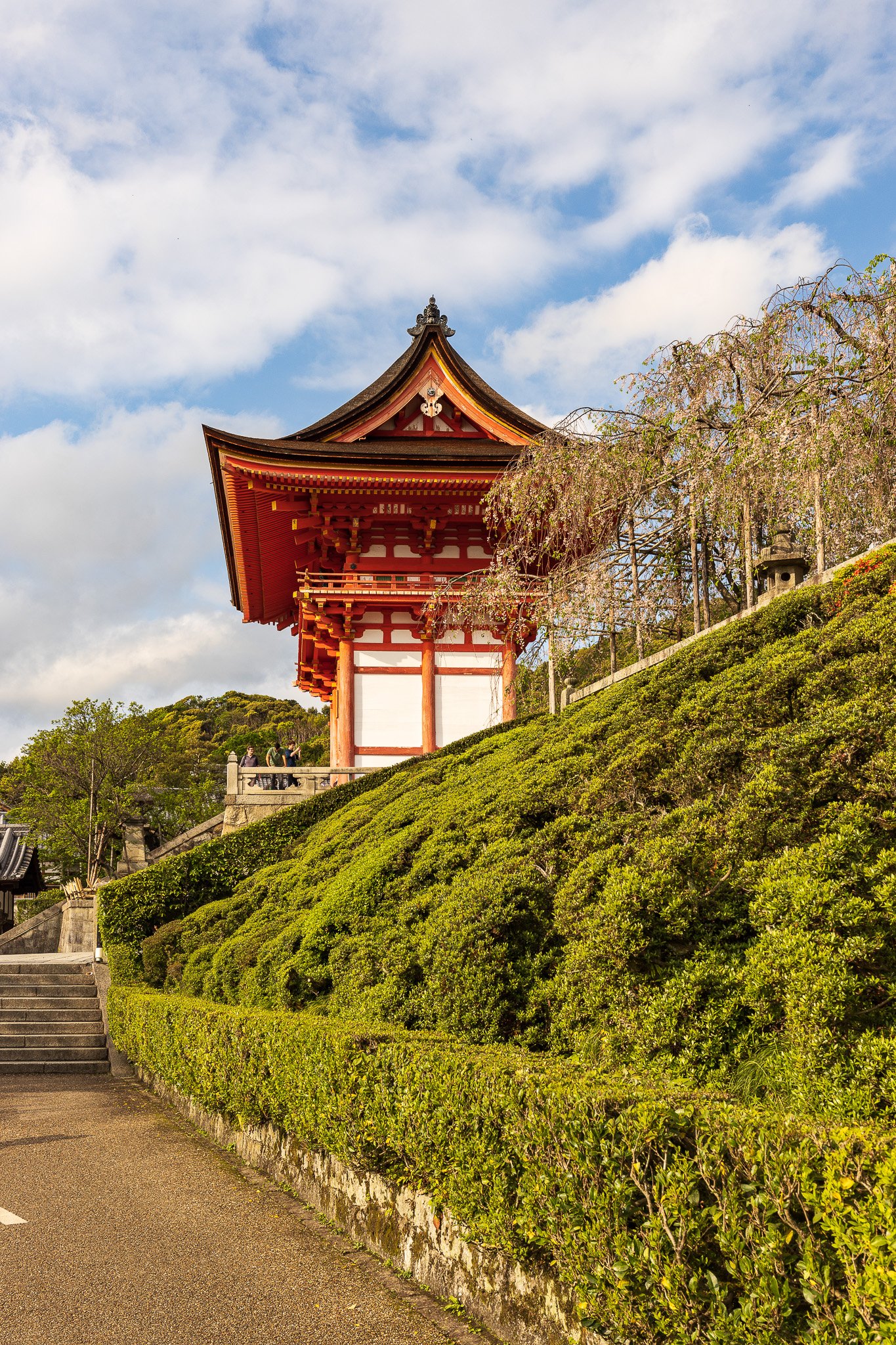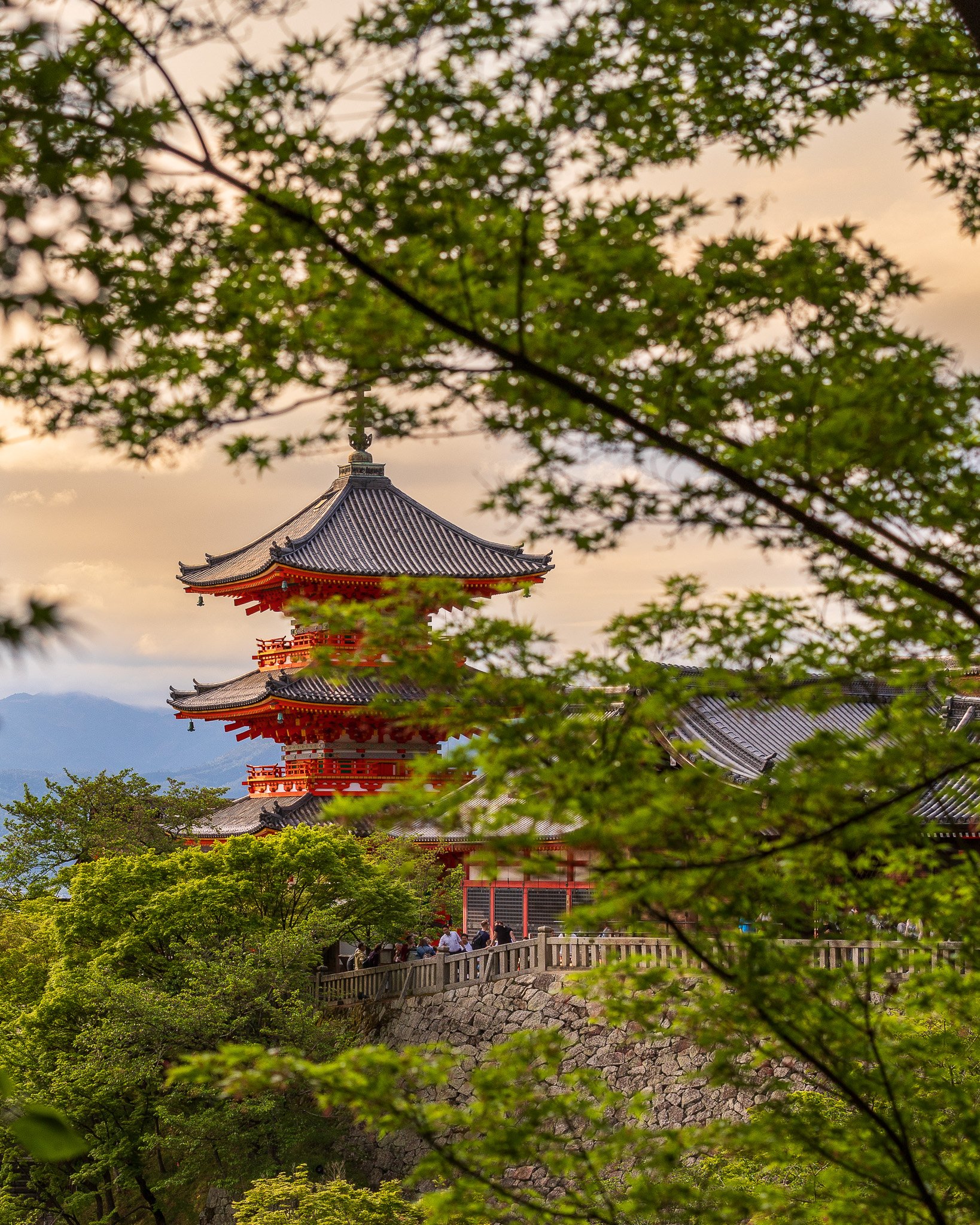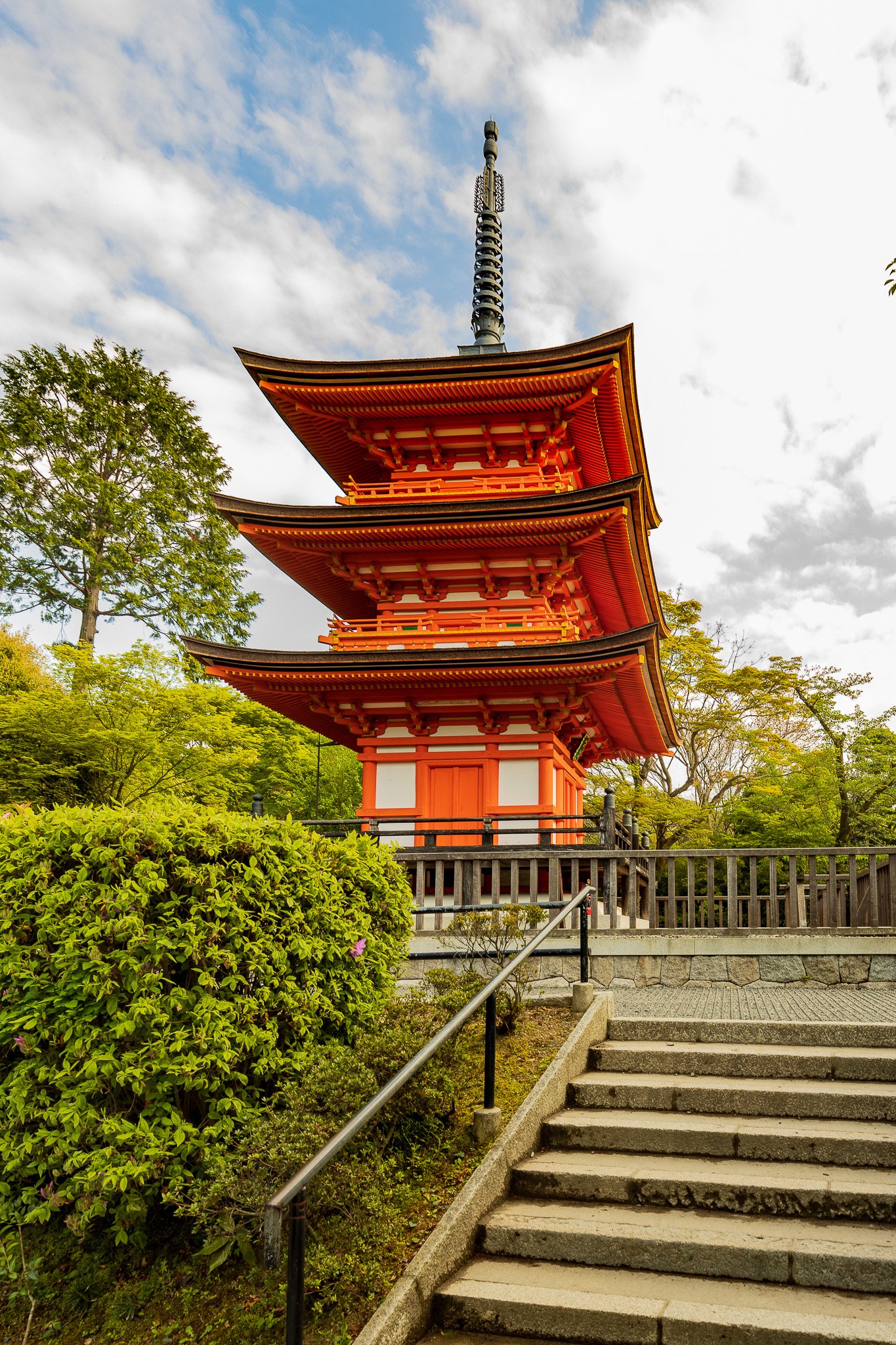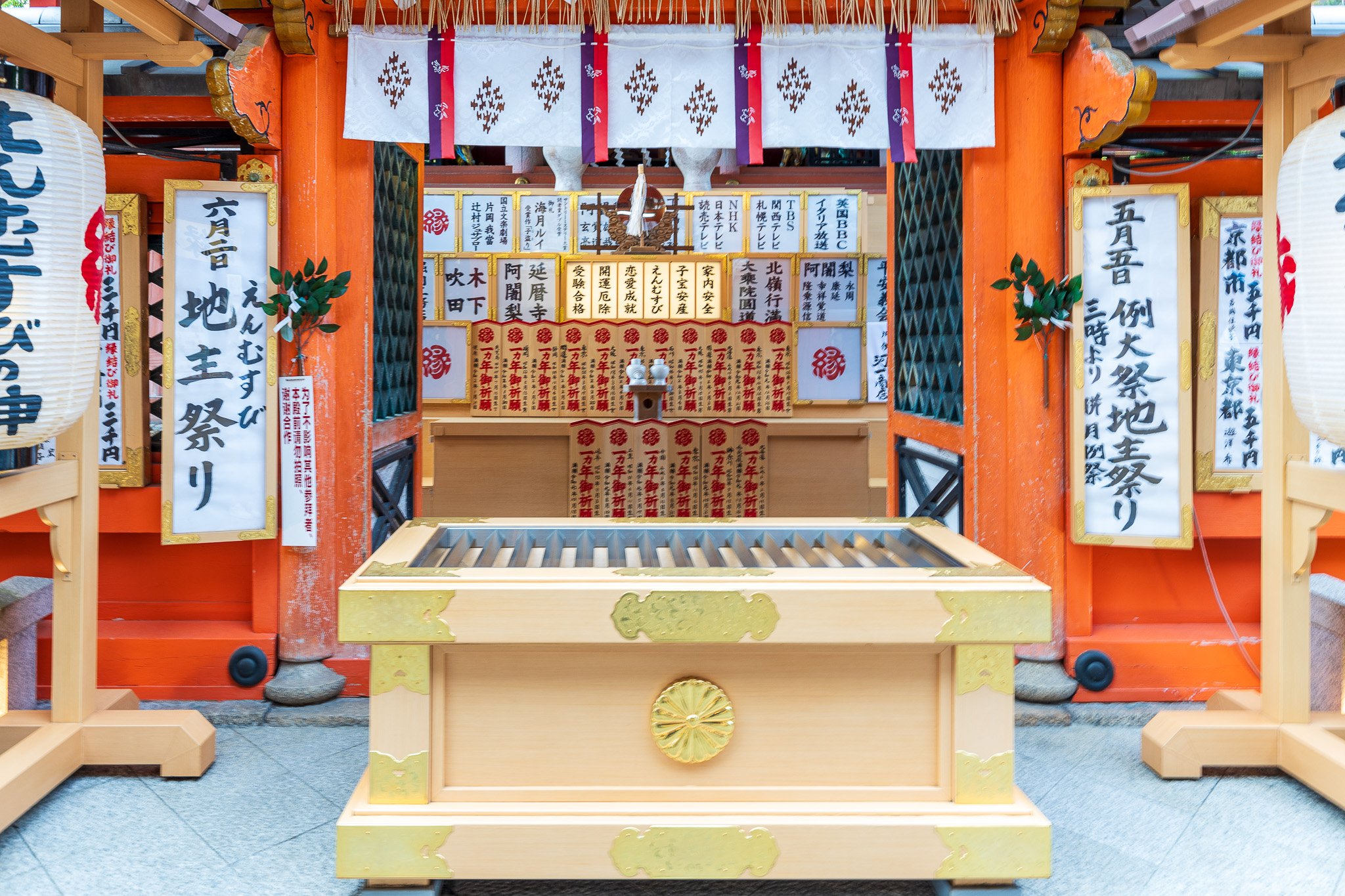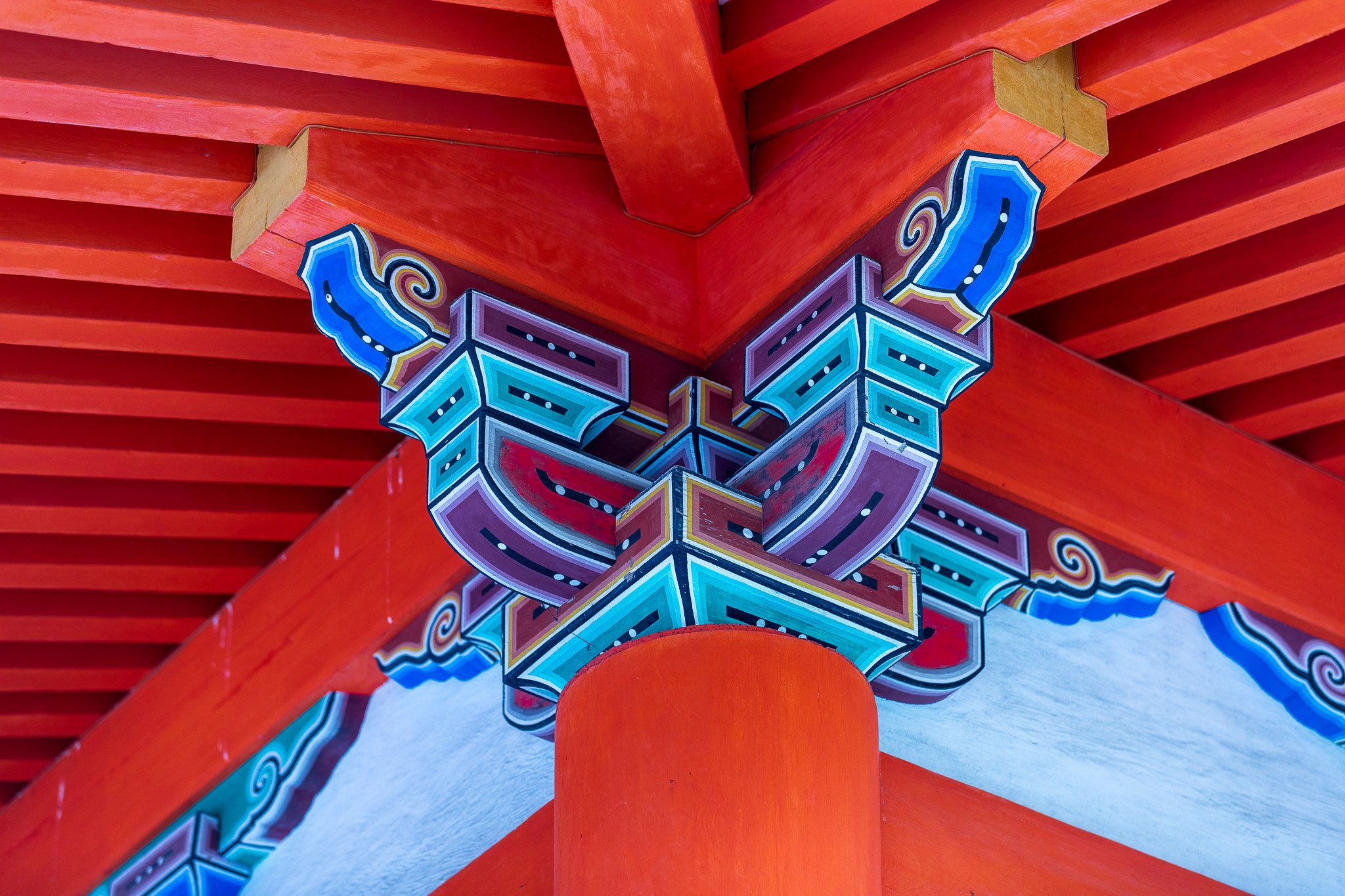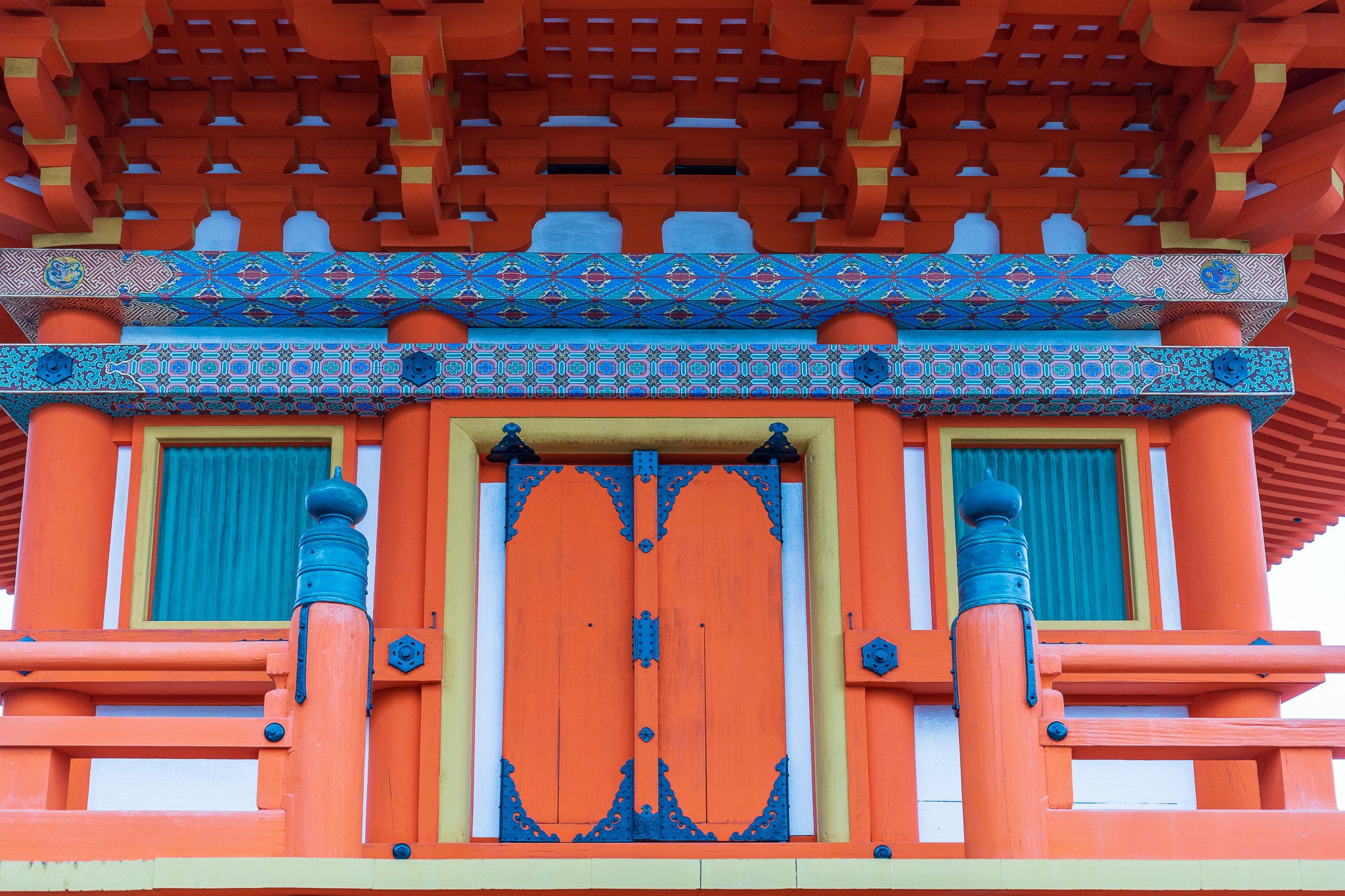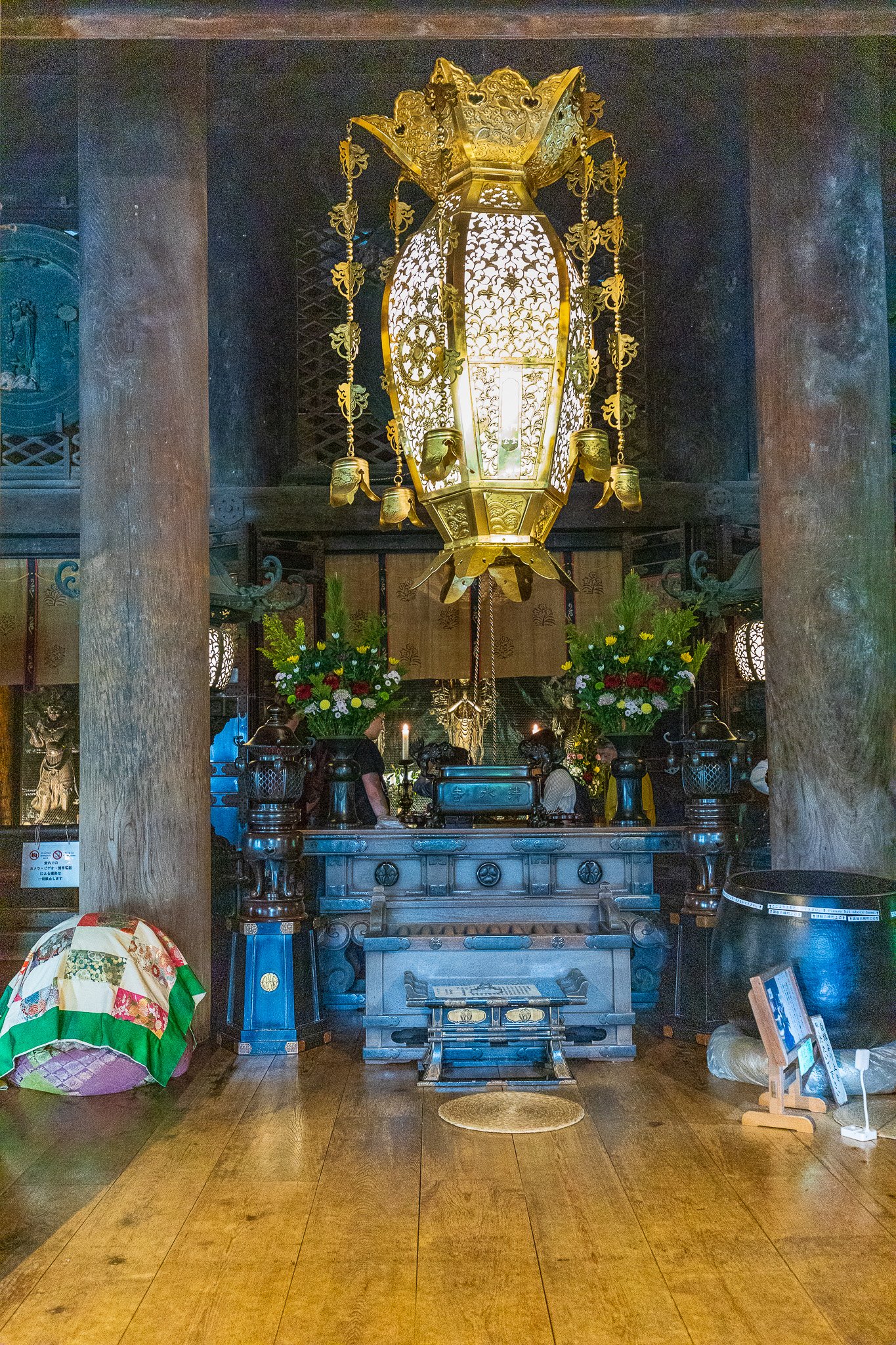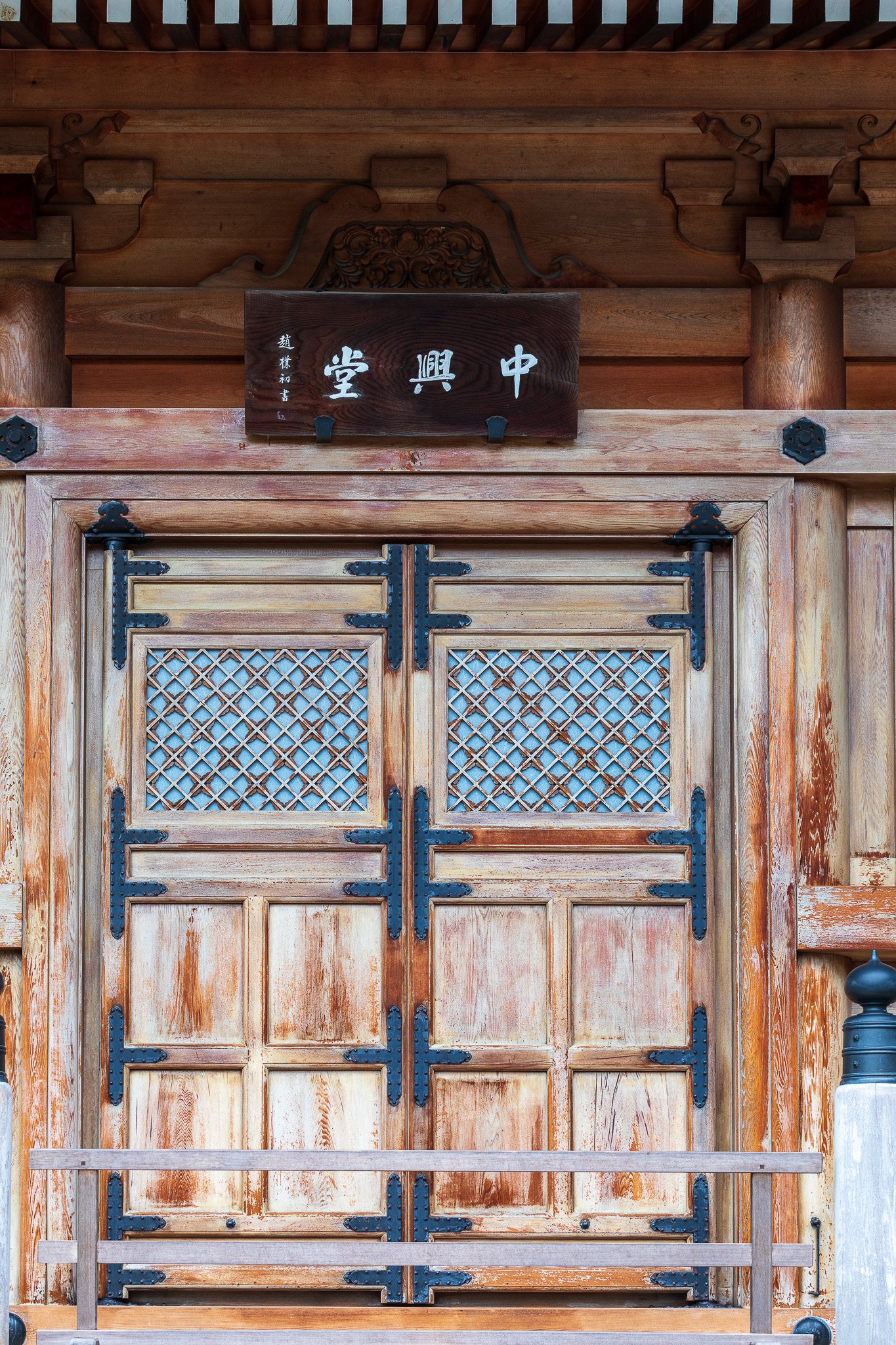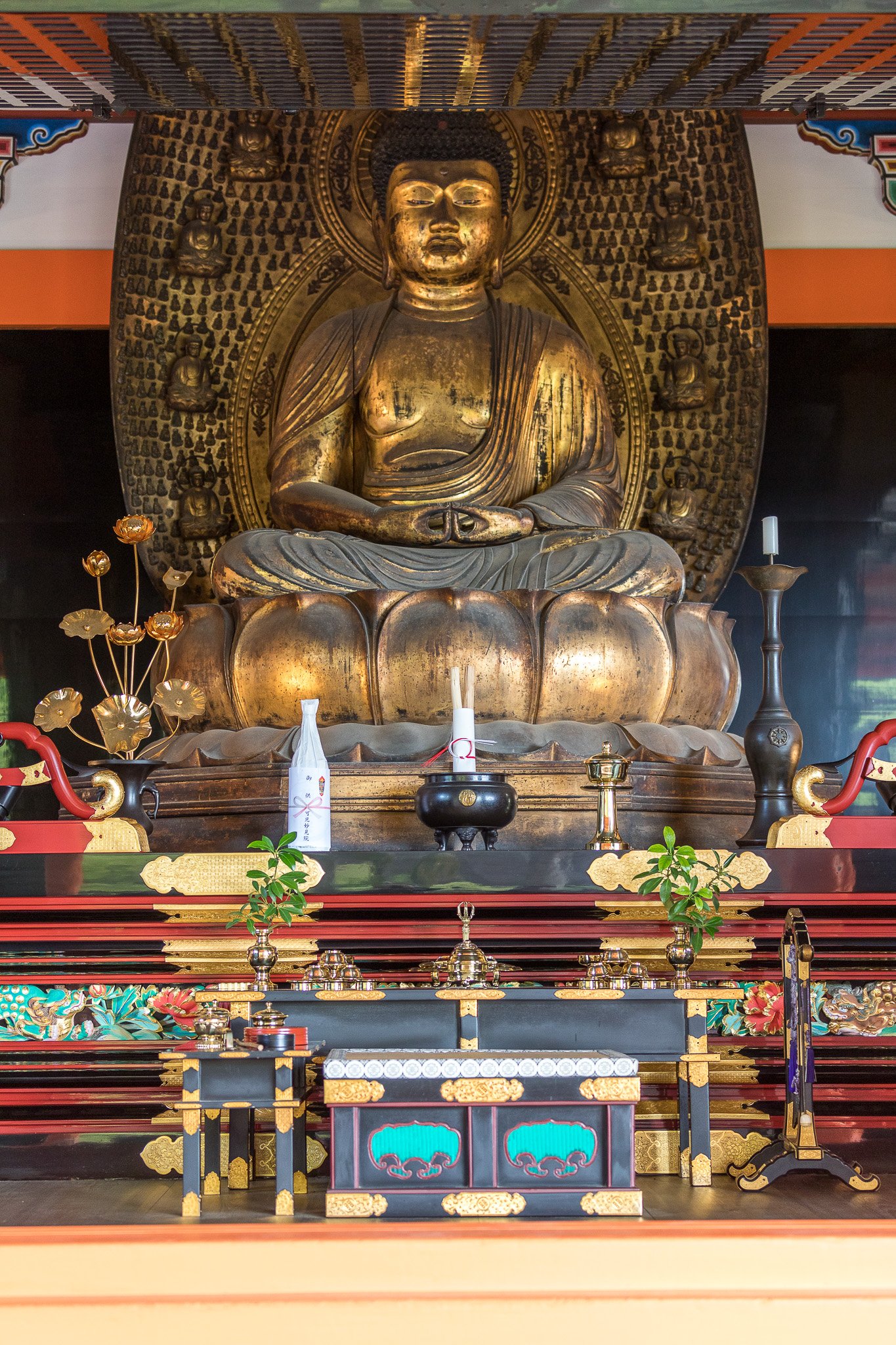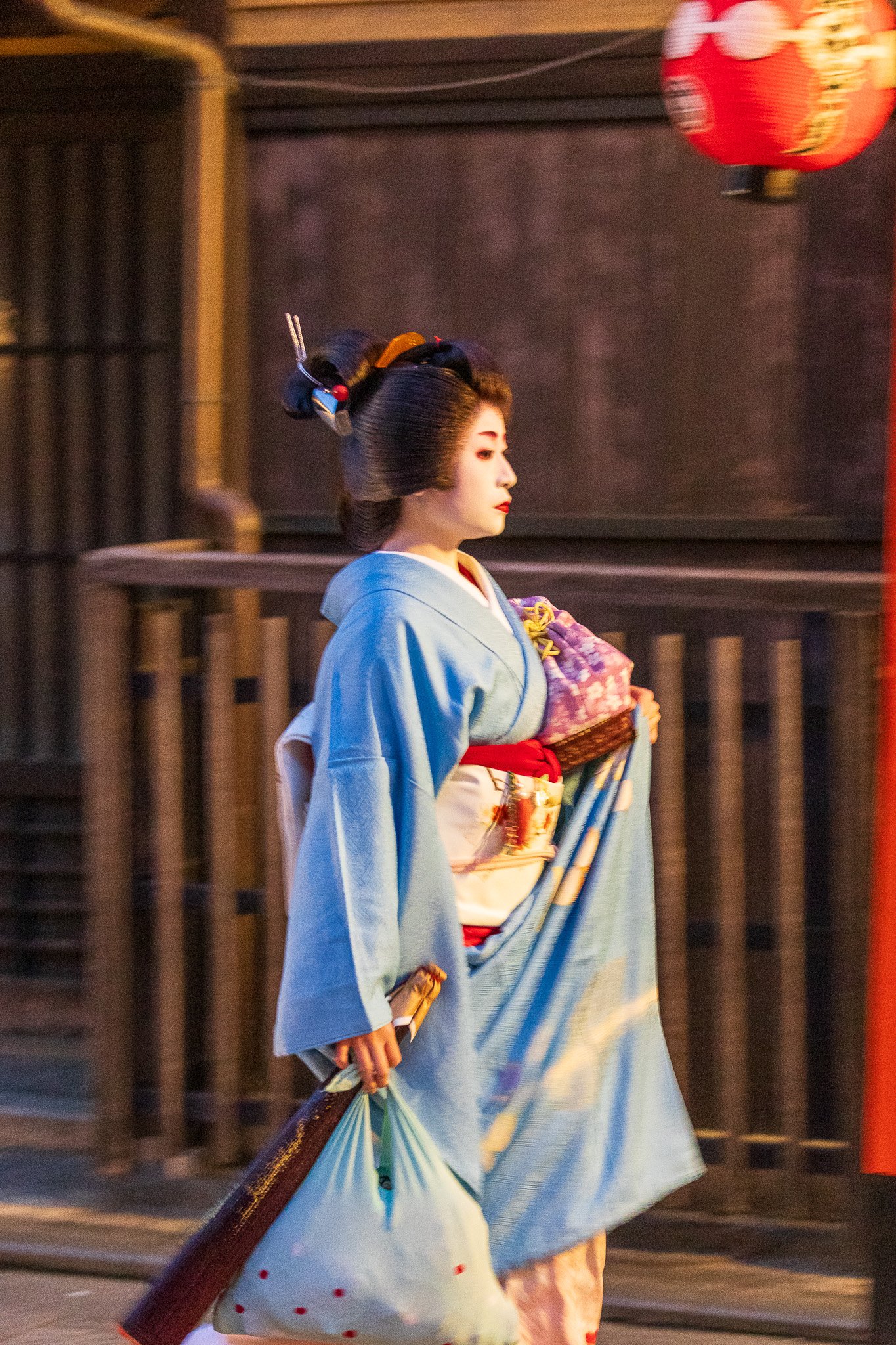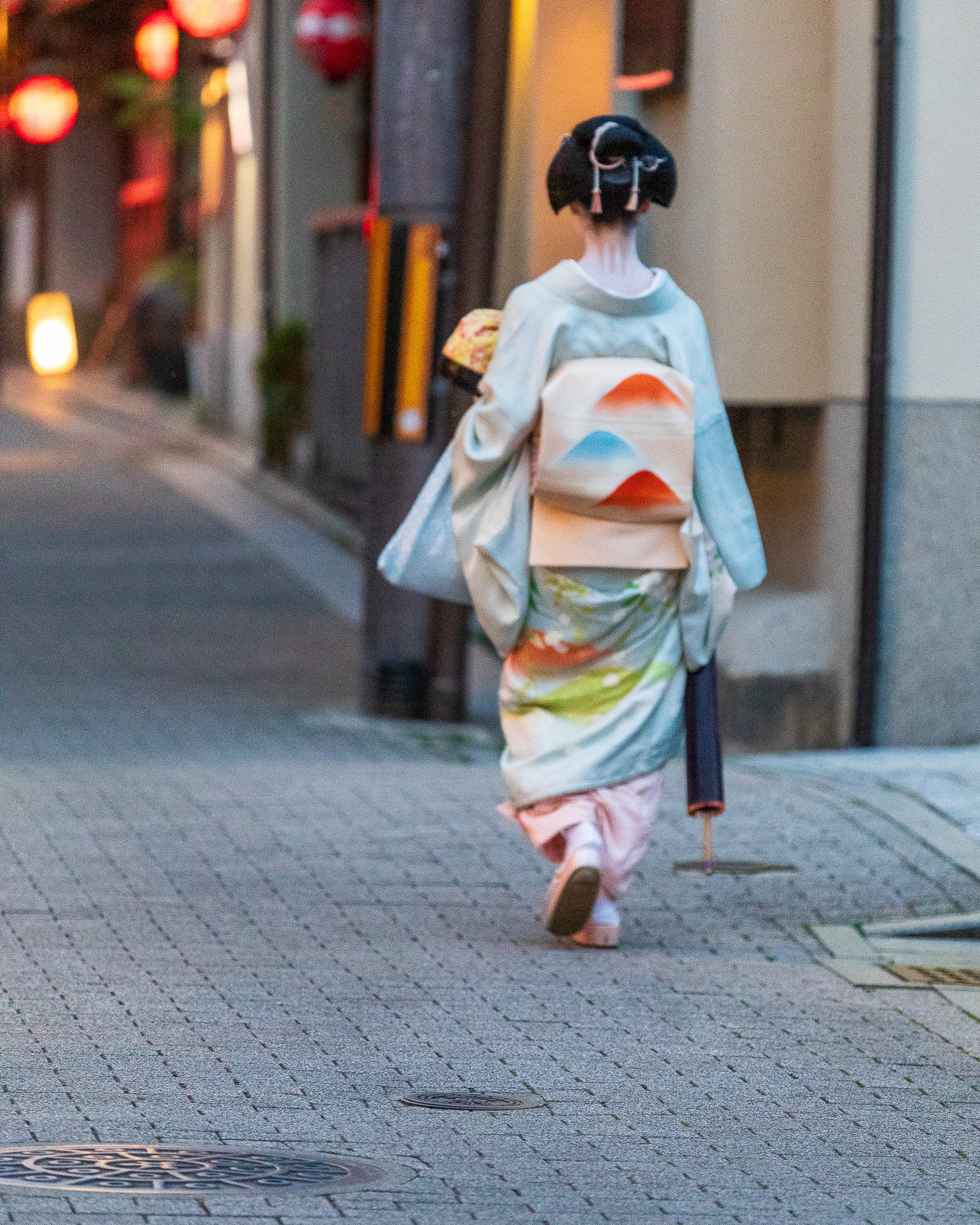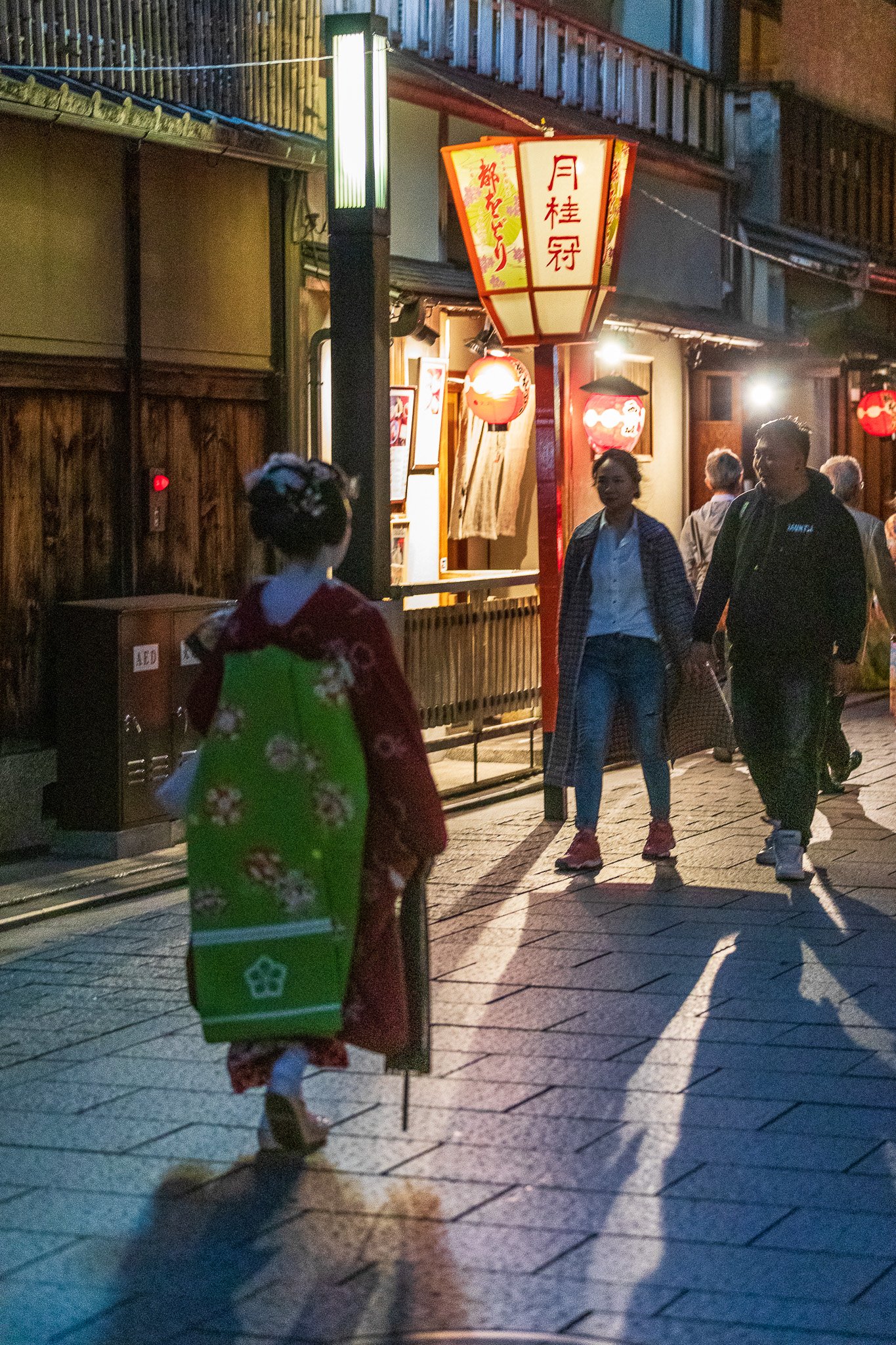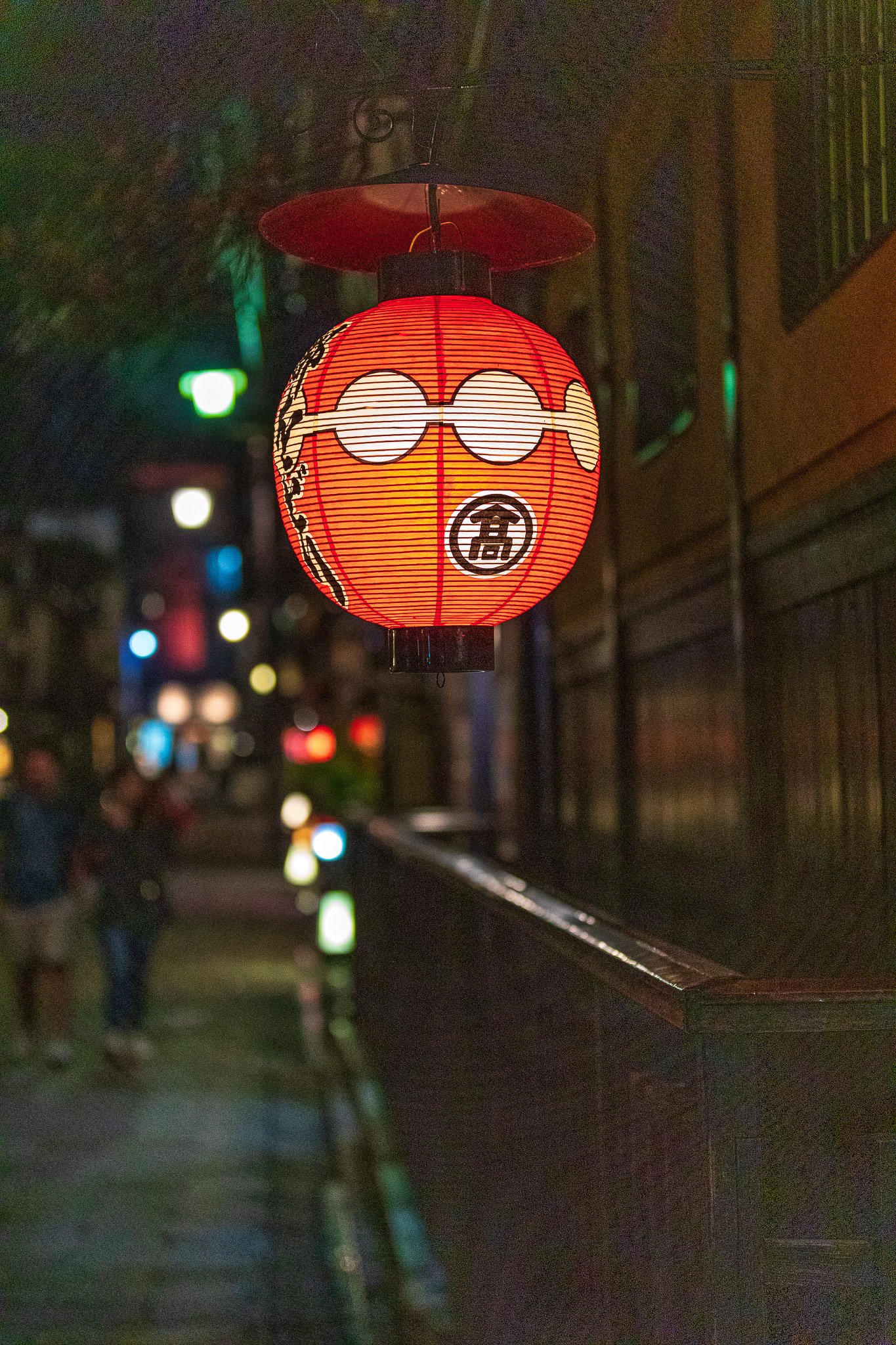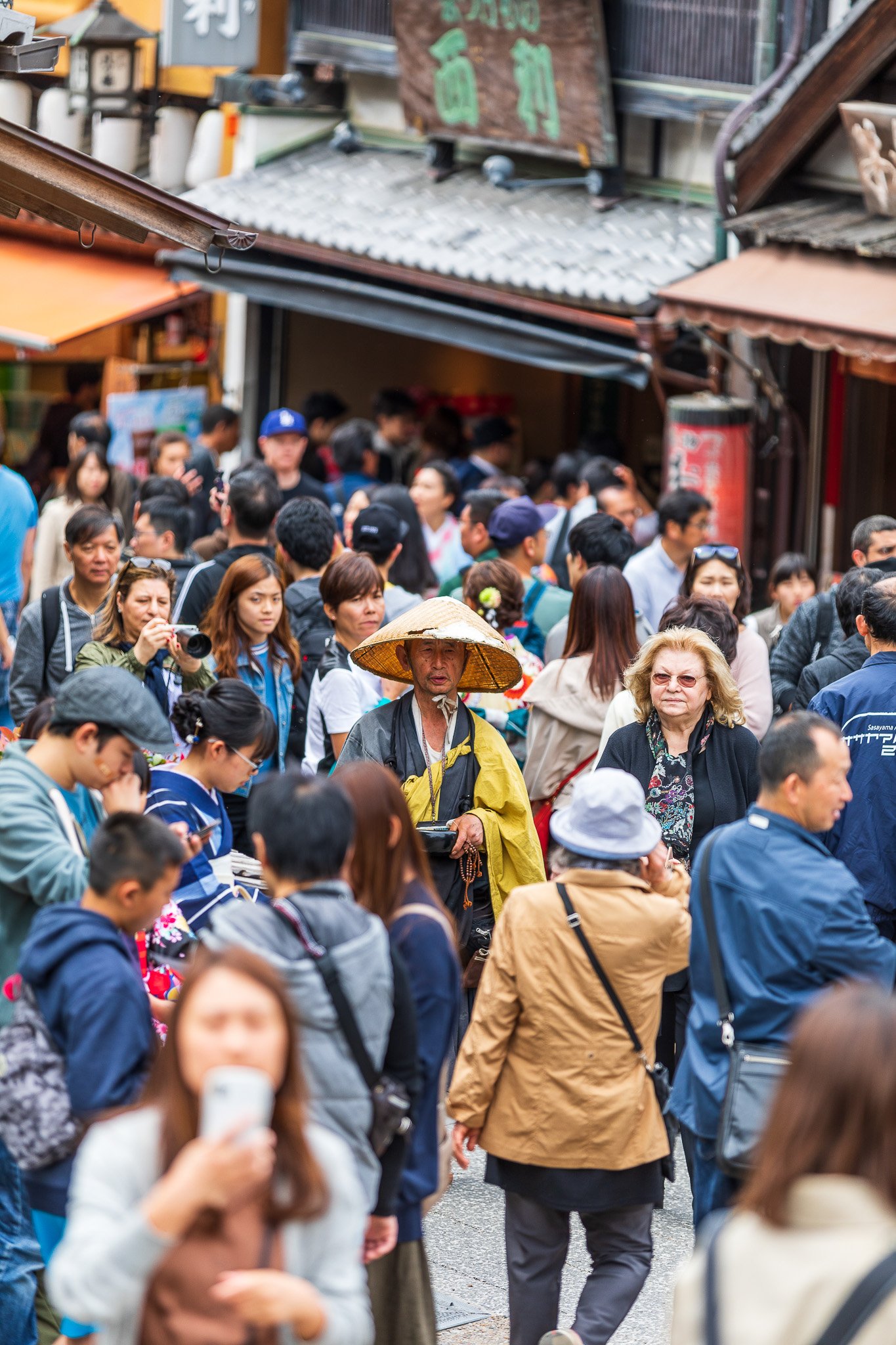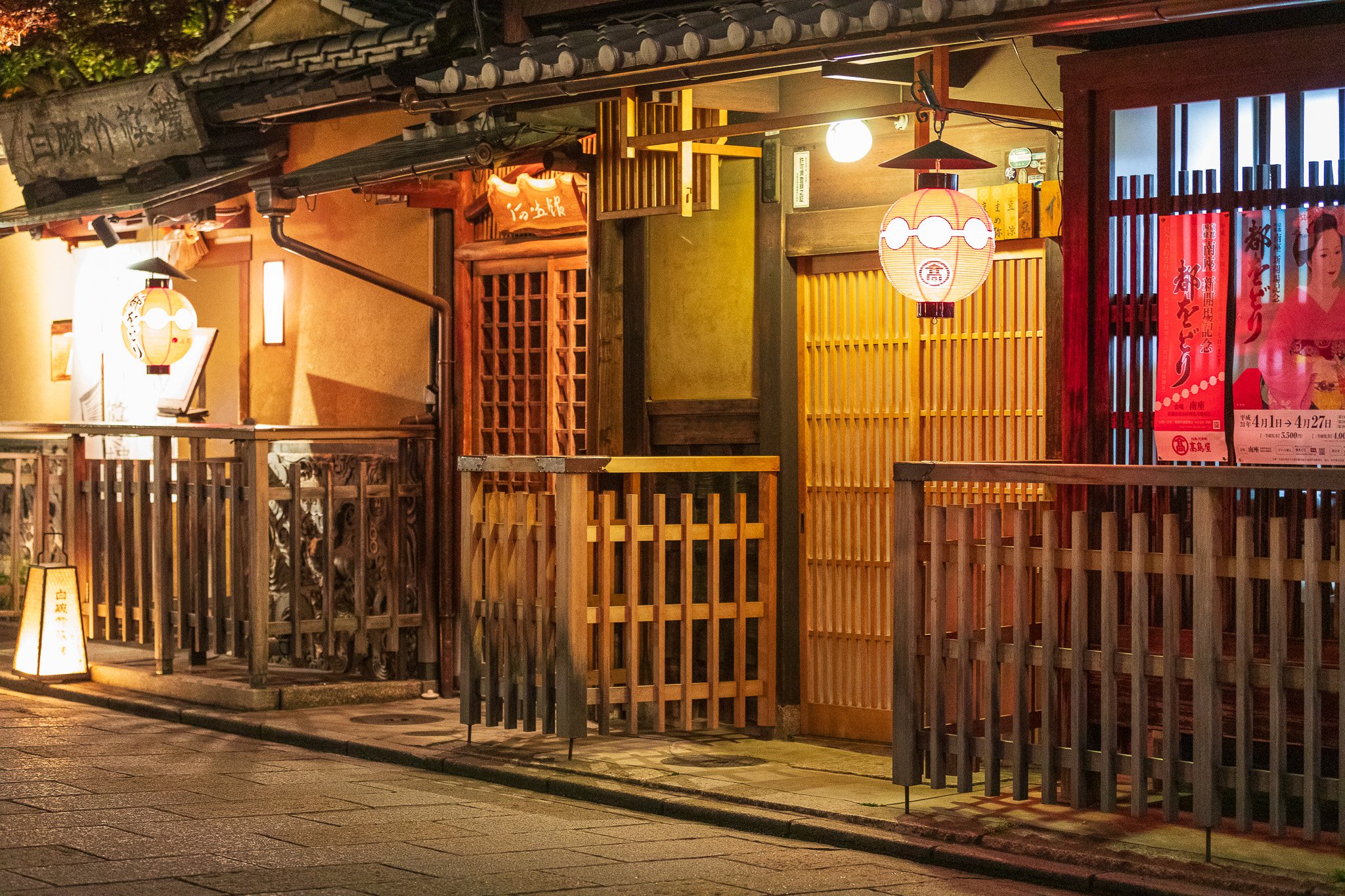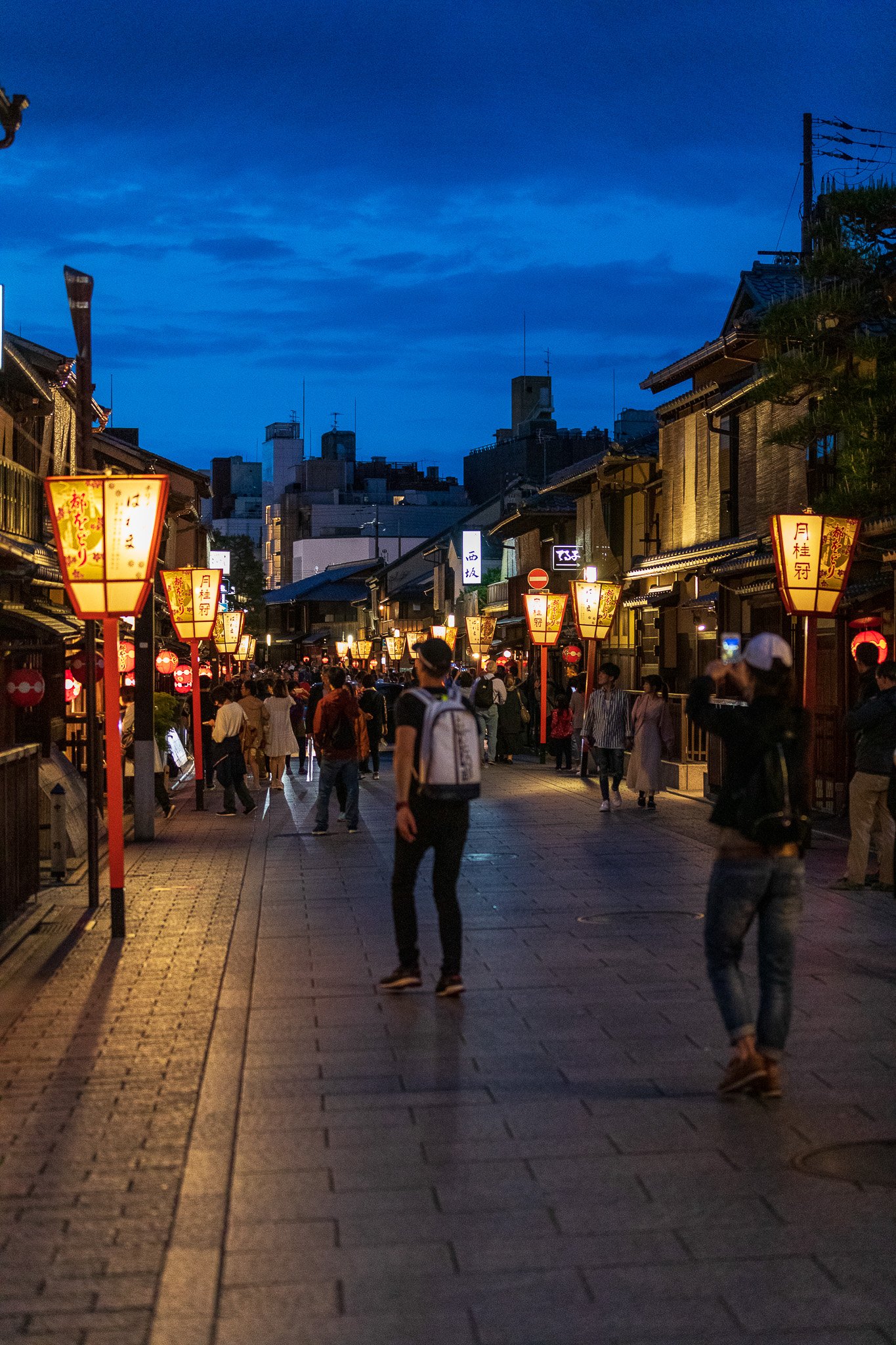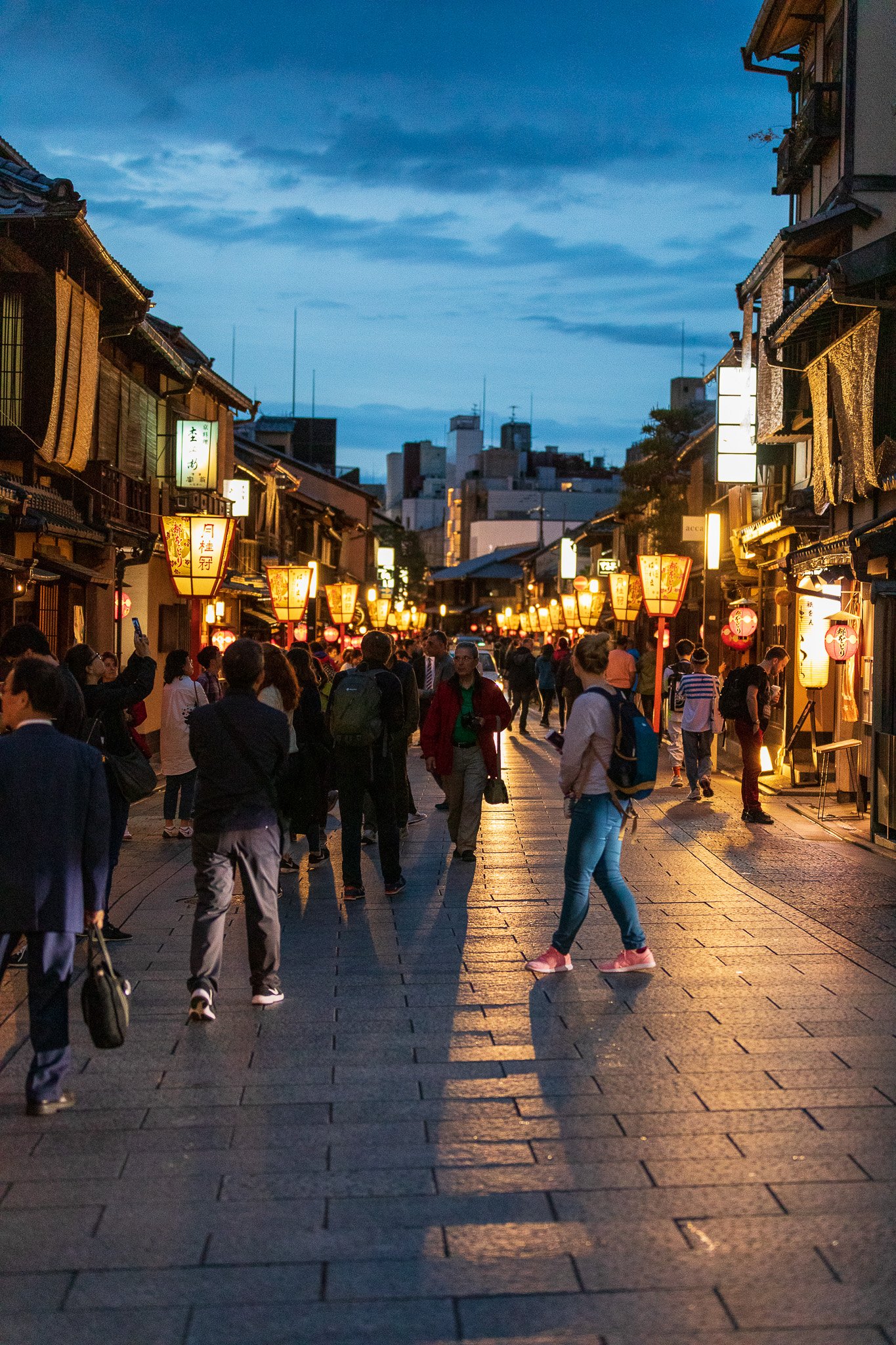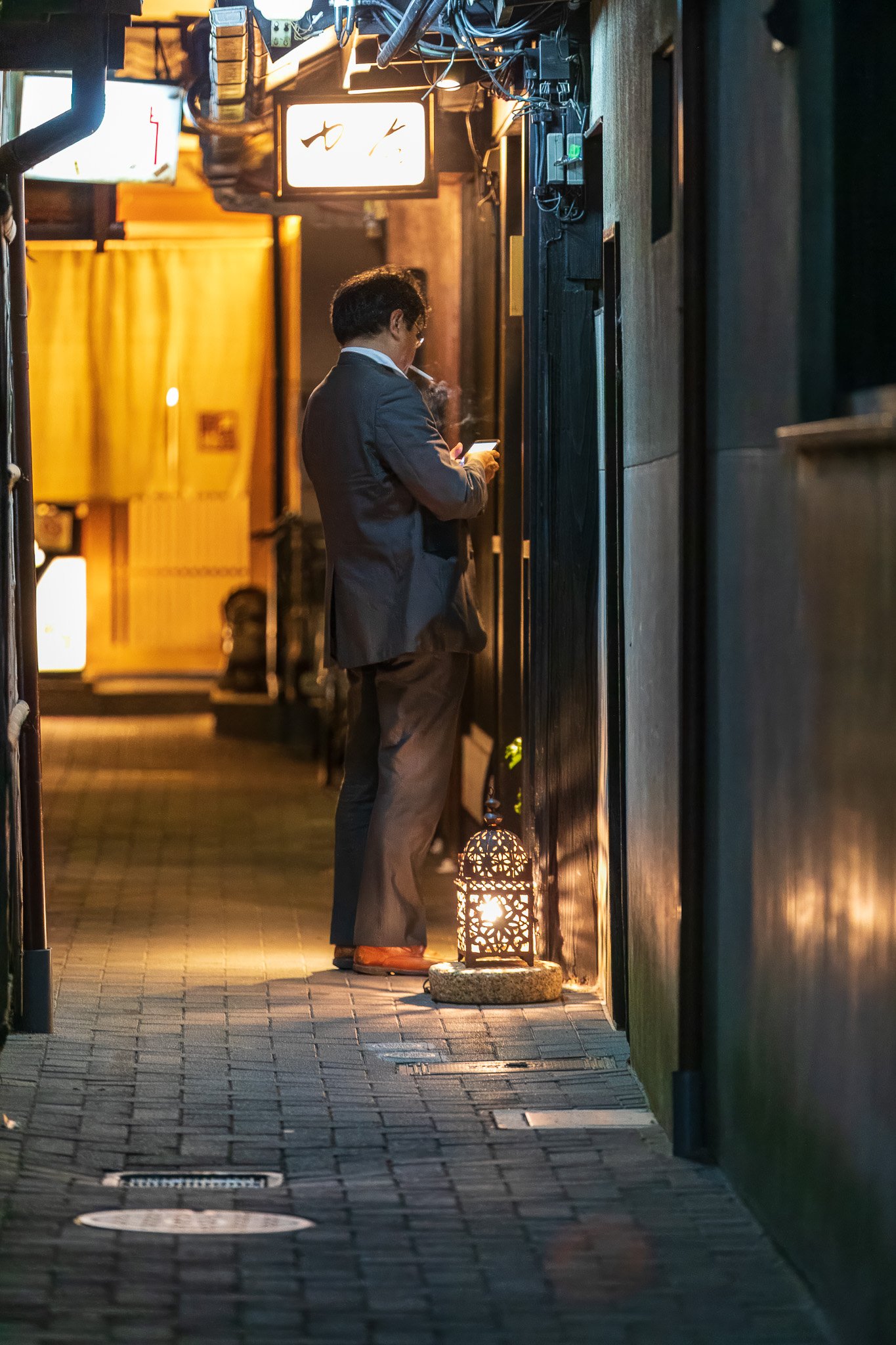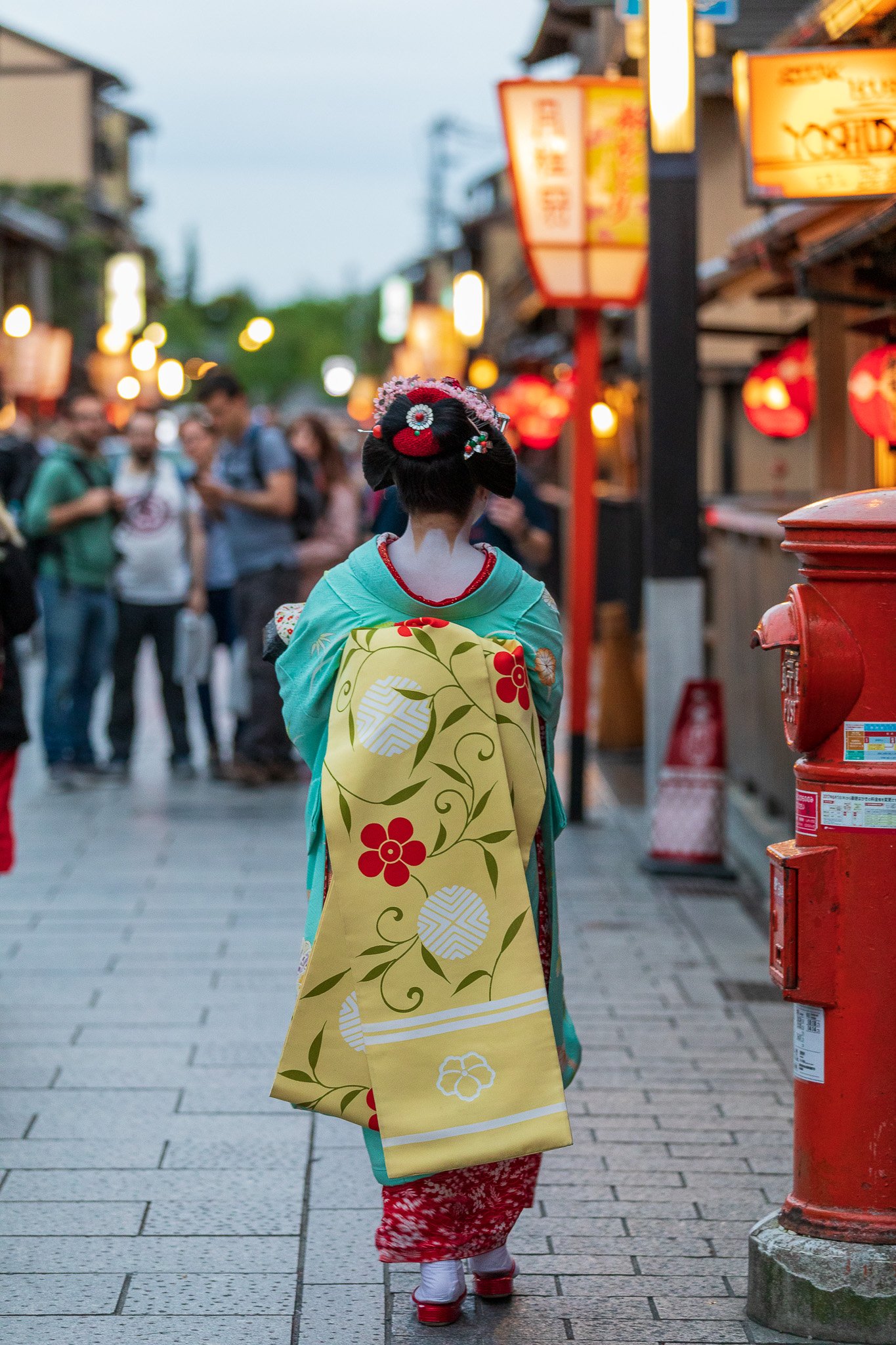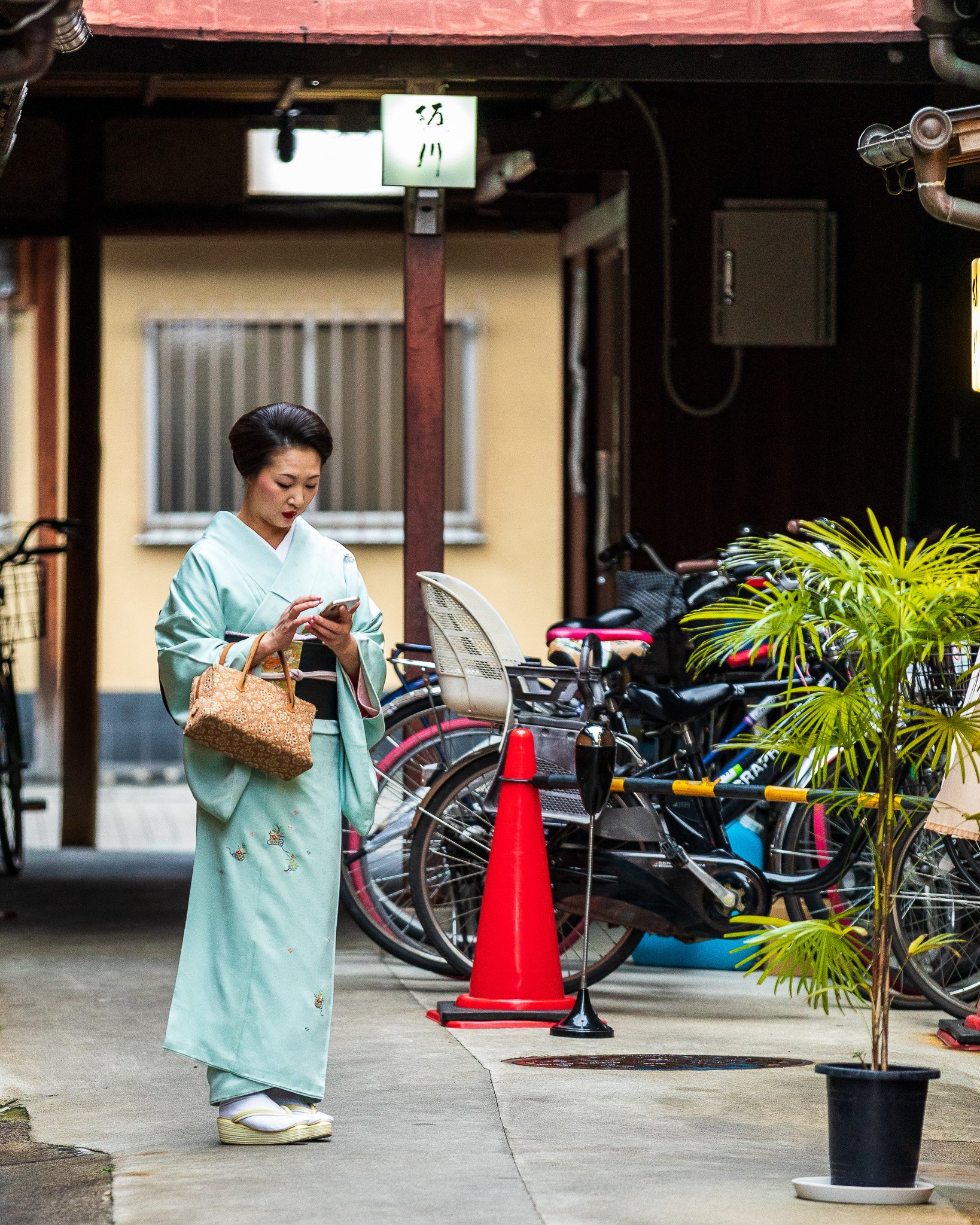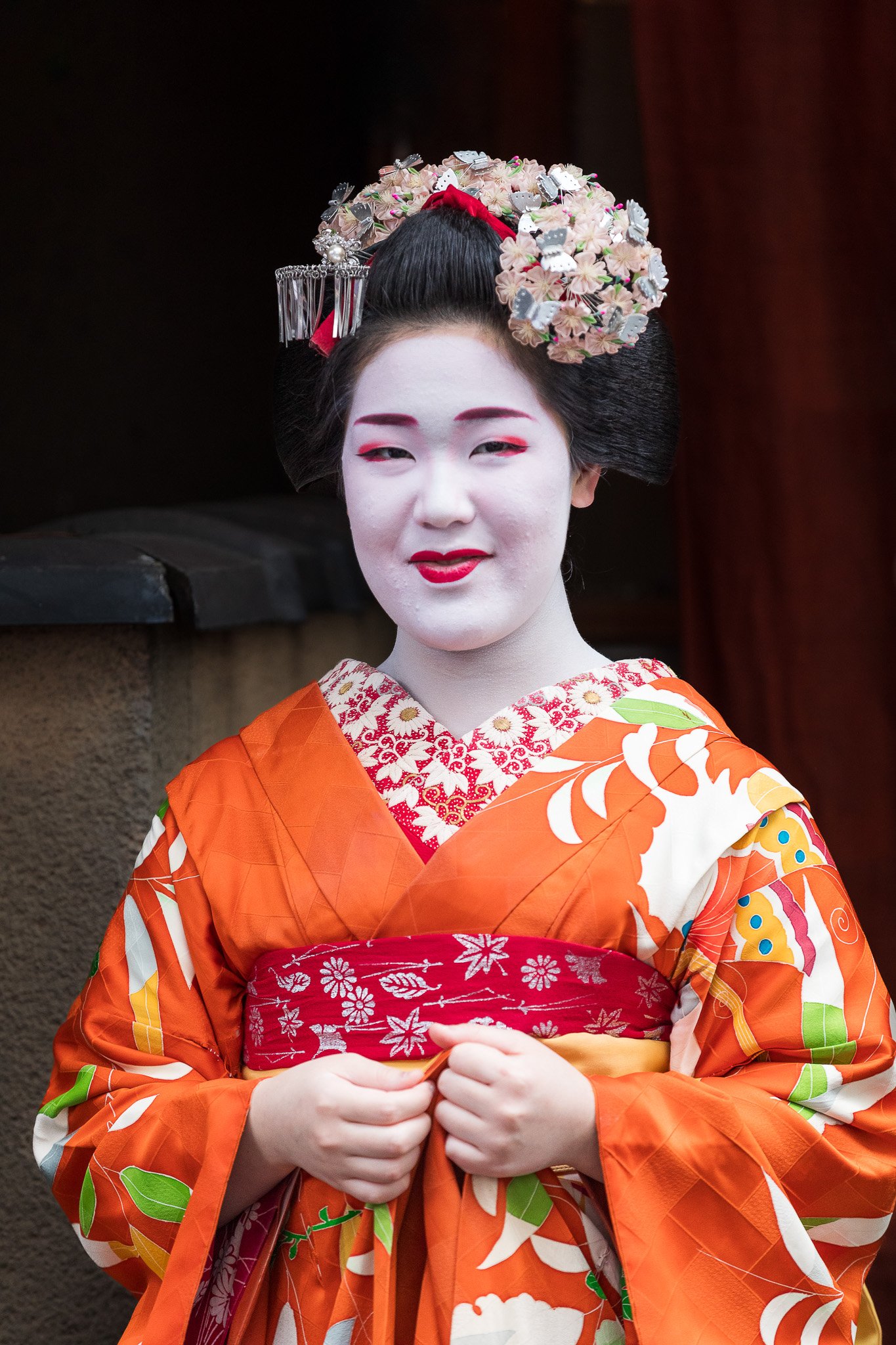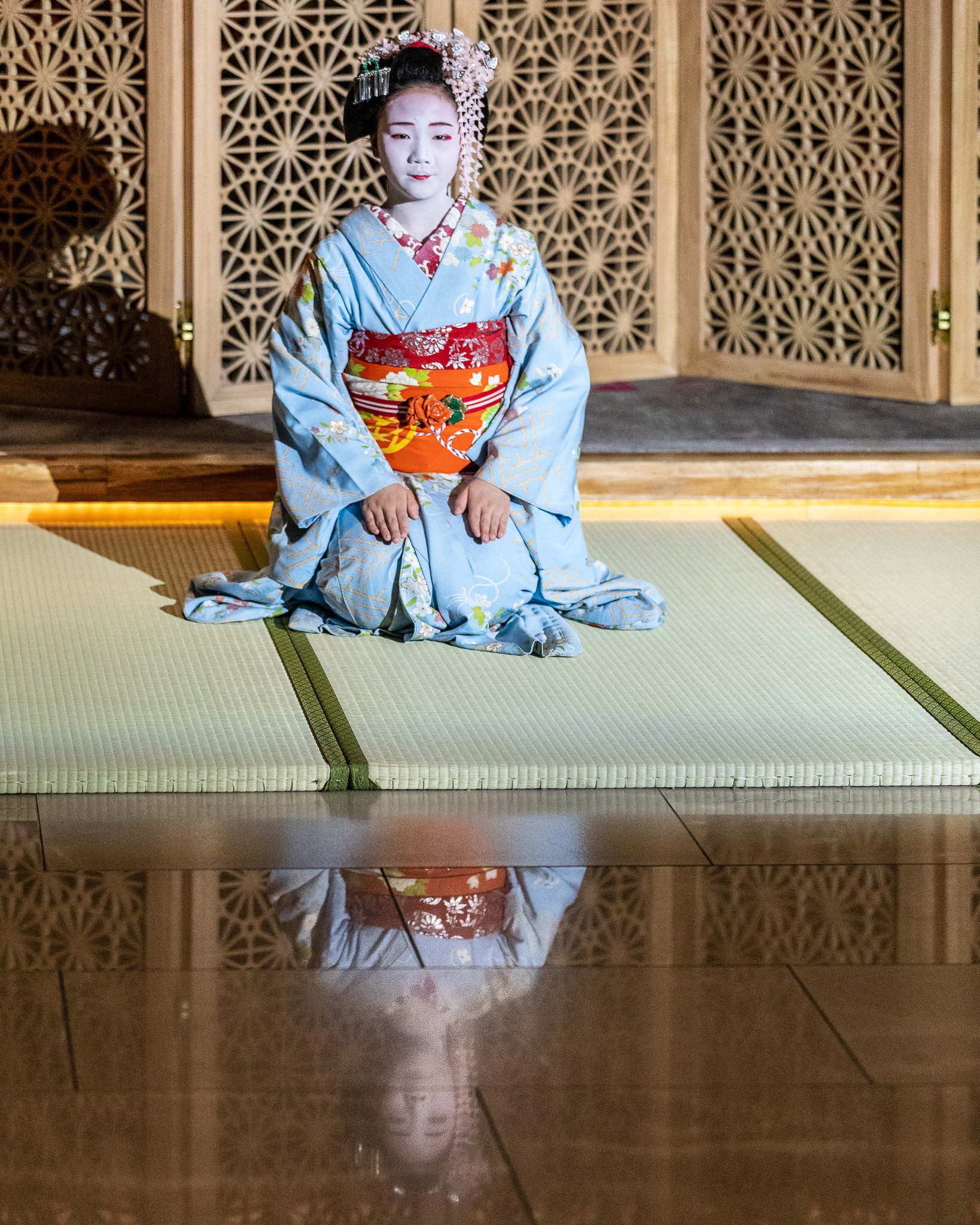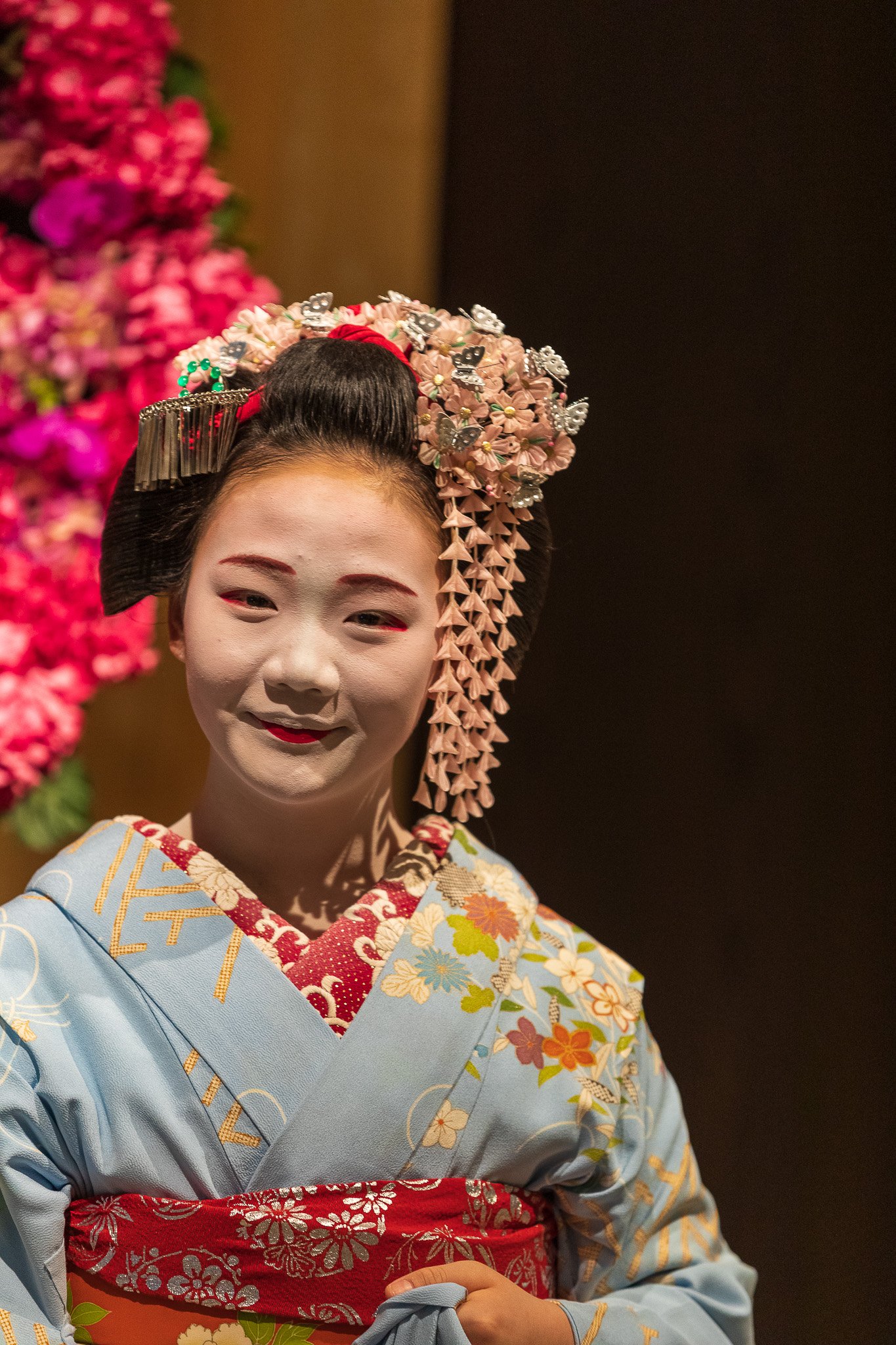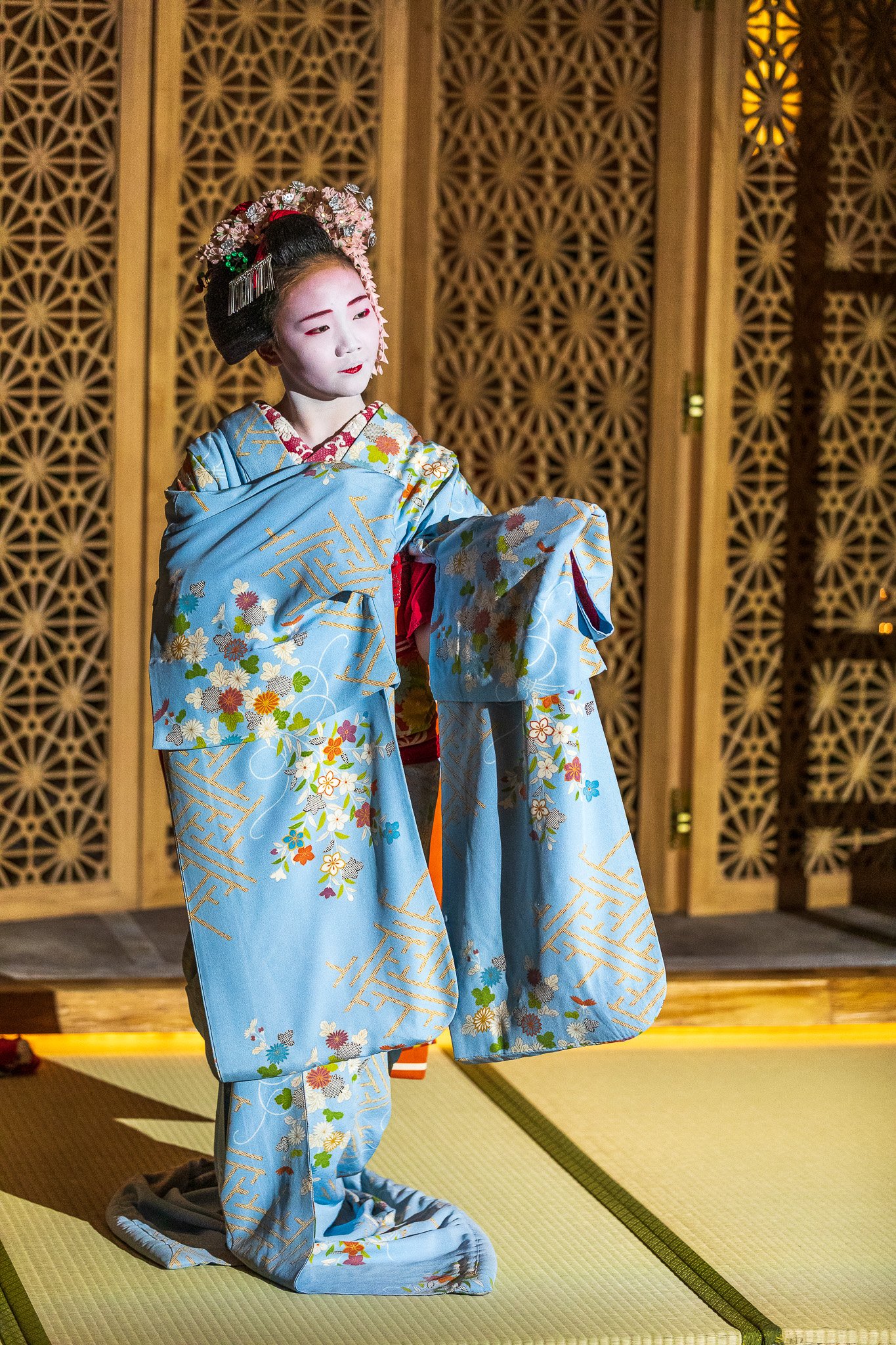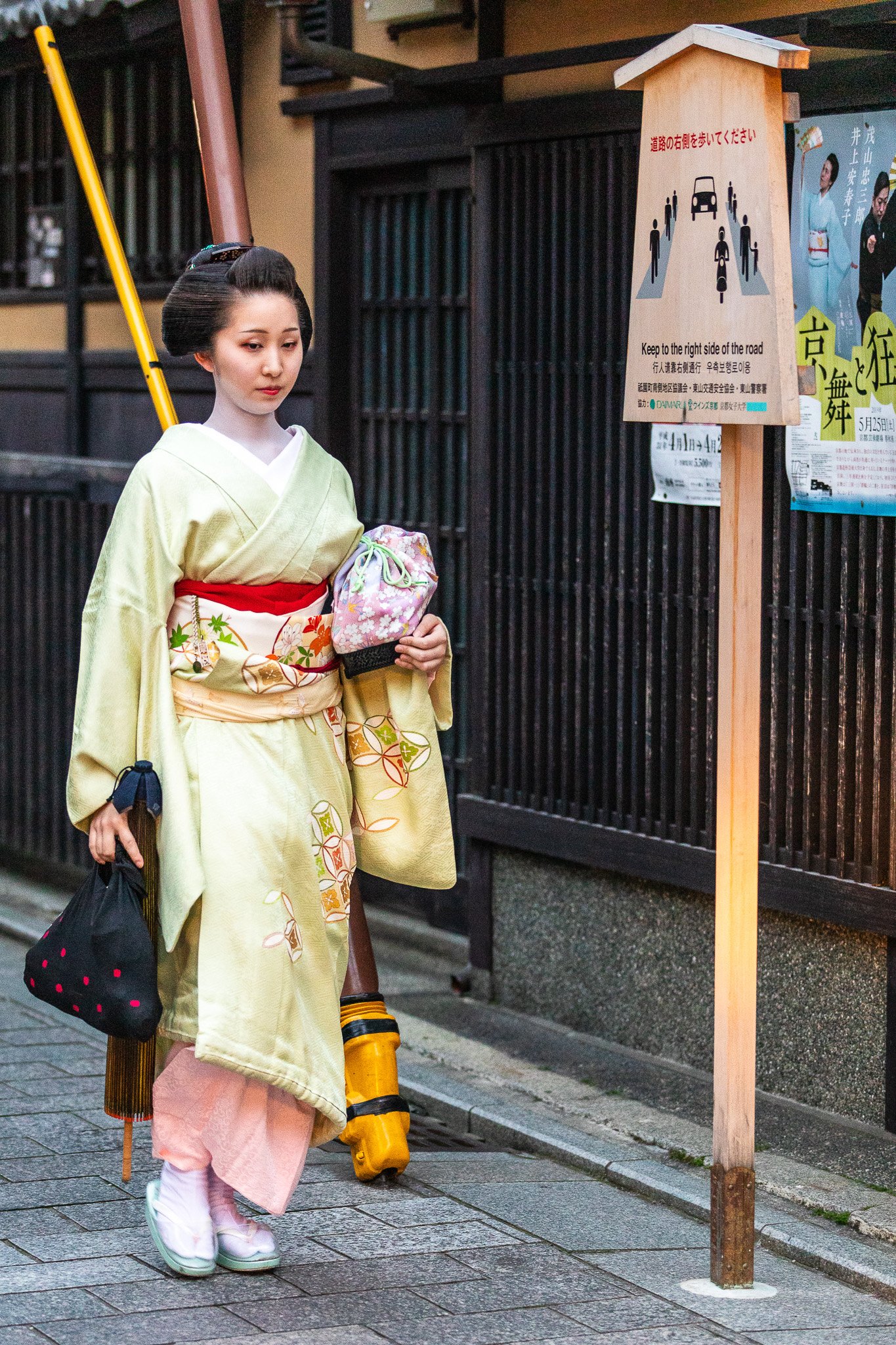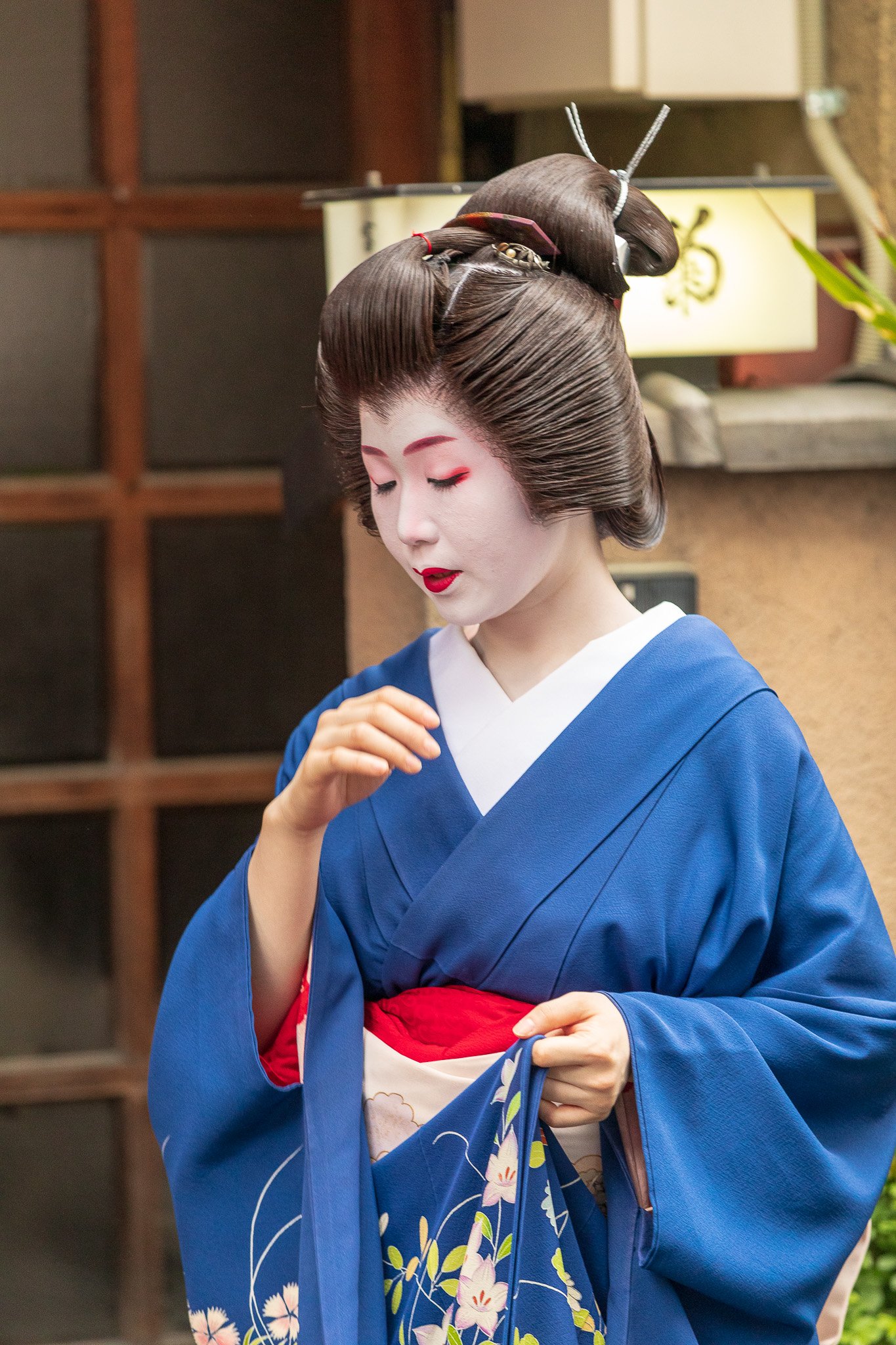My Photography & Travel Guide to Kyoto, Japan
Kyoto is such a beautiful city and a must-stop if you travel to Japan. We had wanted to visit for years and finally made it happen.
After spending a few days in Tokyo, we took the bullet train to Kyoto and spent 5 days. It was quite a contrast from seeing the ultra-modern building of Tokyo to seeing the more traditional building of Kyoto. it was so fascinating to see a different side of Japan. Kyoto is the cultural capital of Japan.
Once the capital city of Japan, Kyoto contains beautiful historical sites, Buddhist and Shinto temples, torii gates, geishas, imperial palaces, and meticulously manicured Zen gardens. The city has over 1,600 temples, peaceful gardens, historic tea houses, and vibrant geisha districts.
It’s one of those cities that you will love strolling through. I would plan on spending 3 to 4 days discovering the city and the dozens of UNESCO World Heritage sites.
How Long to Stay
To truly soak in Kyoto’s magic, plan for at least 4-5 days. This timeframe allows you to explore popular sites without rushing and leaves time for early-morning or late-evening shoots when crowds are lighter, and the light is softest.
Best Time of Year to Visit
Spring (March-May) for cherry blossoms that transform Kyoto into a pink wonderland. Late March to early April is ideal.
Autumn (October-November) for fiery fall foliage, making temple visits and garden photography especially magical.
Winter (December-February) is quieter, with a chance to capture snow-dusted temples and gardens.
Getting to Kyoto
The Nozomi trains on the Tokaido Shinkansen Line are the fastest trains that run between Tokyo and Kyoto. A one-way trip from Tokyo Station to Kyoto Station takes just 2 hours and 15 minutes. It is definitely worth experiencing the bullet trains of Japan. Our hotel in Tokyo even arranged to have our suitcases picked up in the morning, and they were in our hotel in Kyoto when we arrived.
Getting Around
Kyoto’s public transit system is reliable, with buses and trains covering most areas. Bicycles are also a popular way to explore. Uber is available, though taxis are more common and easy to hail. Renting a bike gives you the freedom to explore at your own pace and reach hidden spots.
Where to Stay
Most people stay in one of 2 areas: either the downtown or southern Higashiyama area. Of course, there are so many hotel options to match any budget.
For a truly immersive experience, the Higashiyama and Gion districts are the best places to stay. Located near major historic sites, these areas capture the essence of Kyoto’s traditional charm while providing easy access to bustling shopping areas and peaceful riverfronts.
Luxury Hotels
The Ritz-Carlton, Kyoto - Overlooking the Kamogawa River, this luxury hotel combines Japanese minimalism with opulent design, ideal for travelers who want elegance with a hint of tradition.
Hyatt Regency Kyoto - Nestled in the Higashiyama district, this hotel offers a serene, Zen-inspired experience, perfect for unwinding after a long day of shooting.
Four Seasons Hotel Kyoto - A luxurious oasis near Kiyomizu Temple, featuring a stunning pond garden and beautiful traditional architecture.
Mid-Level Hotels
Hotel Kanra Kyoto - A stylish boutique hotel blending traditional Japanese elements with modern comforts, offering easy access to major sights.
Mitsui Garden Hotel Kyoto Shinmachi Bettei - Located in the heart of Kyoto, this hotel combines Japanese elegance with comfort at a mid-range price.
Noku Kyoto - Situated near the Kyoto Imperial Palace, Noku Kyoto offers chic rooms with thoughtful design, perfect for a relaxed stay.
Experiencing Kyoto's Diverse Food Scene
The food in Kyoto, like the rest of Japan, is fantastic. There are plenty of tea houses, the Nishiki Market, and, of course, sushi restaurants.
Japanese Chefs are True Masters
A blend of old flavors and new trends reflects the city's cultural heritage. Yet, everything we ate was just delicious. I loved how they would proudly tells us from which province the ingredients were from.
Where to Eat: Local Flavors and Charming Coffee Shops
Whether it’s traditional Japanese cuisine or Kyoto-style fusion, the city is a paradise for food lovers and photographers.
Nishiki Market - Known as "Kyoto’s Kitchen," this bustling market is perfect for tasting local street food and snapping colorful food shots.
Hyotei - A three-Michelin-star restaurant serving traditional kaiseki meals in a 400-year-old tea house.
Giro Giro Hitoshina - Modern kaiseki with artistic presentation, this riverside spot is a favorite among locals and travelers.
Ajiro - Near Kinkaku-ji Temple, this Buddhist vegetarian restaurant offers beautifully presented dishes, perfect for photographers.
Ogawa Coffee - This local coffee chain offers a cozy ambiance for editing photos and unwinding.
Coffee Shops
% Arabica Kyoto Higashiyama - Famous for its minimalist interiors and beautifully crafted coffee, this is a must-visit for coffee and photography enthusiasts.
Wife & Husband - A charming, rustic café where you can sip coffee while overlooking the Kamogawa River—an ideal spot for candid street shots.
Photography Gear
I would bring a 24-105 mm or a 15-35 and a 70-200mm. With the 70-200, you can photograph the Geishas from a respectful distance. While walking around, I would set my camera on auto ISO with a minimum speed of 1/125th of a second at f5.6. This way, I could capture the elusive Geishas.
Photography Locations
Street Photography
I loved photographing people in Kyoto. From artists, to dogs in glasses, to all sorts of interesting people, it was so much fun.
KinkaKU-JI Golden
The Kinkaku-ji Temple, also known as the Golden Pavilion, is a stunning temple surrounded by greenery. This location can become very crowded so I would recommend going in the morning.
GINKAKU-JI SIlver Temple
Another beautiful temple is Ginkaku-ji, the Silver Temple. We were here on a quiet morning; the gardens were some of the most beautiful, and I loved the views over Kyoto.
KIYOMIZU-DERA
Kiyomizu-dera was the largest and most crowded temple we visited in Kyoto. Our favorite part was the wishing shrines, where good luck charms could be purchased. Our hotel was only about 5 minutes away, so we visited quite often.
Without any doubt, the Kiyomizudera Temple is one of the most impressive temples in Japan. Built on the foothills of Mount Otowa, its remarkable structure is surrounded by lavishing nature and stunning vistas.
Do not miss the terrace, which offers clear views of the surrounding forests and the City of Kyoto. This temple is a fine example of Japanese architectural brilliance, built and assembled using no nails but, believe it or not, still earthquake-resistant.
Arashiyama & Arashiyama Bamboo Grove
Surrounded by lush green mountains and only a 15-minute train ride from Kyoto Station, the district of Arashiyama lies. The area has been an extremely popular spot since ancient times because of its scenic, natural beauty.
Arashiyama is home to several temples; Tenryuji Temple is the most famous of them.
The garden is a perfect example of a Japanese Zen garden with the rocks perfectly placed in the sand, moss, pruned trees, and flawlessly raked gravel. You could stare at it for hours. .
Higashiyama District
The wonderful narrow lanes of Higashiyama, one of Kyoto’s many well-preserved historic districts. The wooden cottage houses are souvenir shops that sell pottery, teahouses, cafes, and restaurants.
The lanes between the Yasaka Shrine and Kiyomizudera Temple give you the feeling of what Kyoto was like when it was the imperial capital of Japan.
Nanzenji Temple
As with everything related to Kyoto, the Nanzeji Temple in Higashiyama is one of Japan’s most important Zen temples. It’s a place of beauty and serenity.
Fushimi Inari Shrine
Fushimi Inari Taisha is the most recognized symbol of Kyoto. Once you see a photo of Fushimi, I am sure you will recognize it. The gates lead up to the sacred Mount Inari. The entire area around these famous gates is a wonderful place to explore.
The shrine’s entrance gate is called Romon Gate. It is very hard to capture a photo of the gates without an Instagrammer spoiling your shot.
Yasaka Shrine & Gion District
Geishas are part of the Kyoto experience. In the Gion District, also known as the Geisha District, you will spot many geishas and maikos (apprentice geishas) in exuberant kimonos crossing the wooden Tatsumi Bridge on their way to their meetings.
Maruyama Park
Maruyama Park is right next to the Yakata Shrine and a perfect spot to sit and relax. During the Spring, this is the area you want to visit to see the Cherry Blossoms.
Philosopher’s Path
The Philosopher’s Walk is yet another beautiful, serene area to stroll through. It is a pedestrian road lined with cherry trees following a canal.
This is another popular spot for cherry blossom viewing in spring.
Geishas
One of the hardest things to photograph is the Geishas. Geisha are now a rare sight outside. In Kyoto, there are only about 200 Geishas left.
Trying to find a Geishas in the Gion district is not easy. They are fast and could be competitive speed walkers!! When you stumble upon a Geisha, it is important to be respectful and keep your distance. No one, besides the Kardashians, wants a big camera with a flash to take photos of them in continuous mode. Sadly, you will often see dozens of tourists running after them in packs to bring a photo as if they just saw Justin Bieber.
So Lucky to have Photographed this kind Geisha
Typically, you can find Geishas in the Gion Area of Kyoto, Japan. Gion is Kyoto's most famous geisha district, located around Shijo Avenue between Yasaka Shrine in the east and the Kamo River in the west.
Special Festivals and Holidays
Hanami (Cherry Blossom Viewing): Held in early April, cherry blossom season attracts large crowds, but it’s the perfect time for capturing Kyoto’s most iconic scenes.
Gion Matsuri: Taking place in July, this festival features elaborate floats and processions, making for vibrant, colorful shots.
Obon Festival (August): An ancient Buddhist event where locals light lanterns in memory of their ancestors; beautiful for night photography.
Ready to Capture Kyoto?
I have merely scratched the surface of everything you can do and photograph in Kyoto. It is such a beautiful city that should not be missed.
Kyoto offers a treasure trove of experiences and photo opportunities, and I hope this guide helps you capture the essence of this magical city. Don’t forget to sign up for my newsletter to get more travel and photography guides. And if you enjoyed this guide to Kyoto, you can check out my other Photography and Travel Guides here. Happy shooting! 📷

